

MACH 2 Price
Mach2.6 pricing information.
When you purchase a MACH2.6 Moth it includes the following:
- stunning carbon fibre clear coated hull,
- high modulus carbon foils (2.4/2.41),
- hi modulus 40mm mast,
- hi modulus bent stiff tapered boom,
- carbon gantry,
- 2.5 aero wings with no compression bars,
- KA MSH5.4 deck sweeper sail,
- all rigging ropes and fittings,
- foil covers,
- boat cover,
- wing tramps with foot straps and
- wooden indoor storage box (option to upgrade to a outdor fiberglass box for US$900)
Due to the wild fluctuation of currencies, cost of materials and shipping, pricing needs to be quoted. For a quote please email: [email protected]
Payment method: We accept payments in US Dollars, Euro, GBP and Australian Dollars. Payments can be made by EFT/IMT to the bank account detailed on the quotation.

Thanks for Visiting the MACH 2 Website
Before you go, sign up to keep up to date with all the latest MACH2 developments.
Hydrofoil sailing boats in the moth class sailing world championships changed the America's Cup forever
When Brett Burvill won two races at the moth class sailing world championships in Perth almost 20 years ago, he could not have known how a small change he made to his boat would reverberate around the world.
"He finished 10th [overall], which is pretty good for a crazy new development, but he won at least two of the races I think," recalled friend and fellow boat builder John Ilett.
"They were really spectacular, because he would not go very well at the first part of the race, and then the next part he would pass 20 boats, and then another 20 boats.
"He was just twice the speed."
Next week, more than 100 competitors will return to the Mounts Bay Sailing Club for the 2019 World Championships, two decades after Burvill unveiled his revolutionary innovation.
He had attached a hydrofoil to his boat, which provided lift, reduced drag and dramatically increased his speed.
It also set in motion innovations which made their way to the biggest race in global yachting.
Superfast hydrofoil caused a stir
Burvill wasn't the first person to put hydrofoils on a boat, but he was the first to successfully race them.
"There were ones done in the 1970s, with moths, and ones in the 1990s, but these were never sort of proven in racing," said Ilett, who was an early adopter of hydrofoils.
"People experimented with it but until you actually sail around a course and win a race or win a regatta, then that's when the concepts are proven and adopted.
"I think it was just the inspiration of other crazy boats flying around, because it had been done to other craft but it had not been done in the moth class.
"The moth class is open to any new development, so if you can make them go faster, then we gave it a try."
The attachment of foils to the moth boats brought plenty of resistance, with some competitors concerned the increased speed and difficulty of control would kill the class.
"There was a lot of backlash to it in the beginning," Ilett said.
"The class wanted to ban it, some people wanting to ban it, people walking away from the class and saying I'm never coming back, so there was a lot of fuss about it."
So how do hydrofoils actually work?
Hydrofoils are not a new invention, with their use first recorded 150 years ago when a British patent was granted to Frenchman Emmanuel Denis Farcot.
He claimed that adapting to the sides and bottom of a vessel a series of inclined planes or wedge-formed pieces would have the affect of lifting it in the water and reducing the drag as it went forward.
Inventor Alexander Graham Bell, who is best known for the telephone, also built a foiled boat called a HD-4, which set a marine speed record of 114 kilometres per hour in 1919.
Since then, the technology has been used in military and passenger capabilities, but there prevalence has declined over time, with the foils susceptible to impact and also posing a risk to marine life.
Hydrofoils work in essentially the same way as aeroplane wings.
As the boat moves forward, the hydrofoil travels through the water, but the water that travels over the top does so at a faster speed.
The faster the water travels, the lower the pressure, resulting in an area of low pressure above the foil and high pressure below the foil.
The difference in pressure creates lift, allowing the boat to rise out of the water.
With the hull of the boat out of the water, drag is reduced, and vessels can reach higher speeds.
Making it to the America's Cup
The successful application of hydrofoils in the moth class demonstrated their value to racing and saw them adopted across numerous sailing classes.
But it was their use in arguably the world's most prestigious race that completed their emergence in mainstream racing.
"It's pretty cool," Ilett reflected.
"I think it probably seemed inevitable. I think I'm right that in the early days of the America's Cup they did try to stop the hydrofoil developments, but like the America's Cup do, they found a way around it."
Those changes were implemented in 2013, when America's Team Oracle completed a remarkable 1-8 comeback to claim the event 9-8 over Team New Zealand, with the yachts reaching speeds of about 80kph.
The adoption of the hydrofoil in the Cup has a benefit for those who still race the moths, with successful skippers often hired to compete in the big race.
"It's put a lot of America's Cup sailors into the moths class because it's easier to get the guys out on one of of these more often — for training, for learning and getting a feel for flying," Ilett said.
"Even the guys on the America's Cup boats that don't do particular jobs, they all sail on these boats too."
- X (formerly Twitter)
The Worldwide Leader in Sailmaking
- Sail Care & Repair
- Sailing Gear
- Sail Finder
- Custom Sails
- One Design Sails
- Flying Sails
- New Sail Quote
- 3Di Technology
- Helix Technology
- Sail Design
- NPL RENEW Sustainable Sailcloth
- Sailcloth & Material Guide
- Polo Shirts
- Sweaters & Cardigans
- Sweatshirts & Hoodies
- Accessories
- Mid & Baselayers
- Deckwear & Footwear
- Luggage & Accessories
- Spring Summer '24
- Sailor Jackets
- NS x Slowear
- Sailor Jacket
- Sustainability
- North Sails Blog
- Sail Like A Girl
- Icon Sailor Jacket
- Our Locations
- North SUP Boards
- North Foils
- North Kiteboarding
- North Windsurfing
SAIL FINDER
SAILING GEAR
COLLECTIONS & COLLAB
COLLECTIONS
WE ARE NORTH SAILS
ACTION SPORTS
Popular Search Terms
Collections
Sorry, no results for ""
INTERNATIONAL MOTH SPEED GUIDE
Moth Dinghy expert Rob Greenhalgh introduces this extraordinary singlehanded foiling dinghy and describes the keys to sailing one fast.
Who sails the foiling Moth Dinghy?
The Moth class is for everyone—it’s so exciting, you don’t need to race it. Club sailors can get a huge buzz out of foiling, going fast around the bay, and learning to foil jibe and tack. They might enjoy it so much they never need to join a race. At the other end of the spectrum, there are sailors who have been in Moth Class for a decade or more and love the challenge of racing this exciting, complex craft.

Viewed from stern or bow, the foiling moth is a high-speed machine, clearly unlike other sailboats.
What kind of sailors enjoy this challenge?
Moths are development boats, not a strict one-design class, and that’s daunting for some. The technical and evolutionary side of Moth sailing requires a good understanding of how everything works—how the foils interact with the rig setup and how to balance both aspects. Over the last five years, there have been massive speed advancements, which will continue. To be at the top of the game, you have to enjoy the technical side. But you can buy equipment off the shelf and, if you practice and sail well, soon be up to pace. Though more technically oriented sailors often gain an edge for a while, there are also lots of people who will make changes that don’t help them, so it evens out.
How physical is the sailing?
When you are first getting into it, Moth sailing seems physically hard, but once you’ve done it a while, it’s not too bad. On a windy day with a lot of capsizing, it gets pretty tiring. But it’s a light boat, and the loads are not high. Anyone can do it if you can move quickly at times. There are plenty of Moth sailors in their 60s.
New boats or used, which are better?
My advice for the first-time or second-time buyer is to look for a good second-hand boat that you know will fly. This saves you a lot of effort, because even experienced Moth sailors need a few months to work up a new boat. Sure, it’s always a worry that you might not be getting good enough kit with a used boat, but in my experience, any modern Moth can be made fast. If you want to buy new, a standard boat from either of the two main builders—Exocet by Maguire Boats, or Mach 2 by MacDougall McConaghy—will quick enough for top 5. You can also have a look at the new Bieker Moth by LSF Composites.
The Moth is a development class. What’s happening lately?

The Vi-8 DS 3Di (on top) and Vi-8 LA 3DI feature the same sail area. The LA has more power in lighter winds to foil more quickly; the DS has less drag at high speeds.
What sails do you recommend?

8LA-3Di provides extra power to get on foil.
Which sails do you use?

The decksweeper (Vi-8 DS 3Di) creates an endplate and lowers aero-drag. It is slightly faster once foiling.
How does foil choice affect sail choice?
Moths have two foils, a larger foil for lighter winds and a smaller foil for stronger, and that’s a choice you have to make on the beach. In my case, if I expect to be on my foils all day, I’ll choose the smaller foil and the deck-sweeper sail. If the winds are lighter or less reliable, I will often choose the big foil and the LA sail. And if I expect light air to start but a building breeze all day, I’ll likely choose the big foil with the deck-sweeper sail.
Tuning the Moth Dinghy
What are the keys to tuning a moth.
Generally speaking, you should set up your boat to carry as much rake as possible. How much is that? You’ll know it’s too much if you can’t get under the boom in tacks and jibes. This is not something you do underway, and if the boom is making boat handling more difficult, make the rig more upright until that smooths out.
What other key adjustments do you make before launching a Moth?
Batten tension is one. For Batten 1 (the top batten) down to Batten 5, just take the creases out of the batten pockets—don’t over-tighten them. For Batten 6, remove the crease and then add two more turns by twisting the batten key two full revolutions in a clockwise direction. For Batten 7, take the creases out and add three turns. The outhaul is also non-adjustable underway. Rig the boat ashore with the outhaul loose. Pull on max vang and max cunningham, and then pull the outhaul tight. This will give you a good all round setting.
What other settings can you recommend?
Here some of the numbers from my boat, but don’t worry if your measurements are different. Comparing measurements boat to boat may not matter at all. The important thing is to start recording them and experimenting.
- Front Prodder 340 (adjustable +/-50mm)
- Side Arm 410mm
- Deflection 220mm
- Shroud Base 1500mm
- Mast Length 5100mm (excluding plastic plugs top and bottom)
- Back of mast to clew ring 2340mm
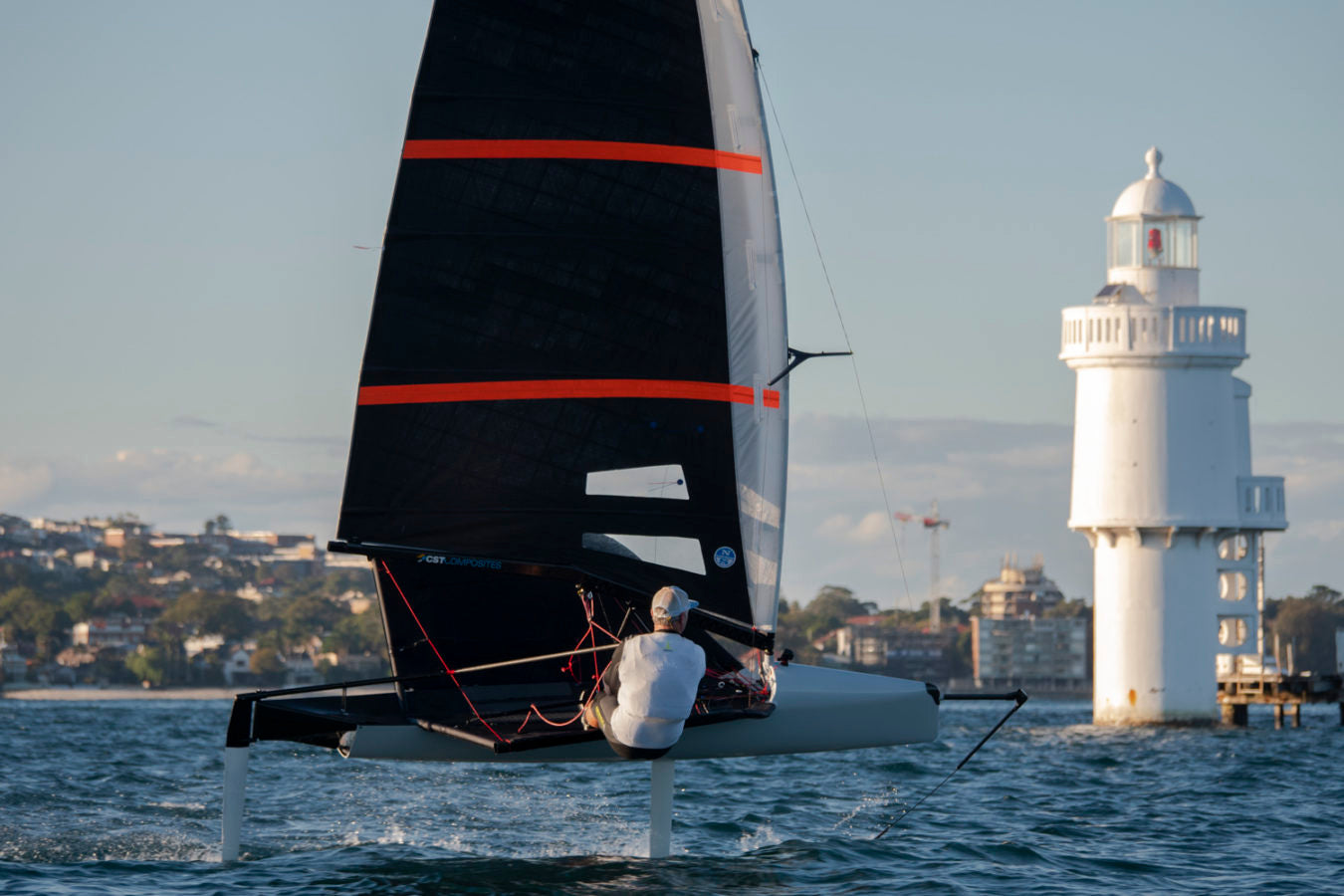
From mast length to shroud base, it's important to record all of your boat and rig measurements. You will change them over time.
How do you set up your foils, actuator wand, and gearing?

Sailing in rougher water requires faster gearing between your actuator and main foils. Foil gearing is a critical control for waves; make sure it can be adjusted for rough waters. To get through waves you need faster gearing. You’ll also change foil size depending on the wind forecast. I have two sets of main foils and use the smaller one on windier days. However, if the wind is light for the first race and predicted to build, I’ll go with the larger foil because the speed penalty of not being able to fly with other boats can trumps all other considerations.
Upwind Moth Sailing
What is most important when sailing upwind.
On any point of sail, the vang and cunningham are powerful controls, and need constant adjustment for different conditions. The goal is to generate power for low-riding and to get up on the foils, and then flatten the sail as the wind builds. One of the challenges of the Moth is it has a maximum 8.25 square meters of sail area, and upwind in most conditions, that’s more sail than you need. Downwind, you have the opposite problem; your speed reduces the apparent wind so much, you’re always starved for power.
What is low-riding mode and how do you sail fast in light winds?
In general you don’t race in winds when you can’t foil, but it may happen that the wind lightens up substantially during a race. Sailing in low-riding mode is an art in itself, something like balancing in a canoe because the hull is so narrow. I always recommend practicing sailing that way.
What does it take to fly a Moth?

Heel the Moth to windward to keep the boat more stable and reduce leeway.
Why do you tip the Moth to windward when flying?
We sail with the rig always tipped to windward because it keeps the boat more stable and reduces leeway on the main foil. Use very subtle steering and trimming of the main.
How do you trim the Moth sailing upwind?
Correct trim is the absolute key to good boatspeed. It’s very easy to over-sheet and stall the front of the mainsail. Always have the inside tell tales lifting. A common mistake is sailing under-powered and over-trimmed. As the wind increases, flatten the main by tightening vang and cunningham to accommodate the higher apparent wind speeds.
How do you adjust sail trim for gusty winds?
You need your rig set-up to be user friendly. That means having enough vang and cunningham to straighten the sail. If twisted, the center of effort can move up and down the sail. It takes a certain level of confidence to get to the point where you can let go of the mainsheet to tighten the kicker and cunningham.
Downwind Moth Sailing
What is the key to good moth speed downwind.

Sailing downwind, be sure to maintain a big entry angle in the lower part of the sail and avoid over-trimming.
What is your focus when trimming downwind?
I focus closely on my lower tell tales, keeping them flying 100 percent and making sure I ease enough to keep the sail ‘hooked up’ with airflow attached. I look for a nice big entry angle on the bottom part of the sail and clean up any horizontal creases by subtly tightening the cunningham. From there, it’s a matter of very subtle trim and steering. If in doubt, ease the sheet and be sure you have good flow going around the front of the sail. If you run into a light patch, just head up to keep the flow going on the main. If needed, power up the main even more. Get the gearing really slow on your foils to minimize drag. The boat will go faster and apparent wind will increase, moving the wind forward and letting you trim harder. Especially when it’s a bit lighter downwind, be sure to pre-empt a drop in apparent wind by easing main and bringing the bow up!
Moth Tacking, Jibing And Gear Changing
How do you foil jibe a moth.

When foil tacking or jibing, you need to flatten the boat. For jibing, bank into the turn to leeward. You’ll turn the boat more aggressively when your body is ready to move across to the new wing.
How do you foil tack a Moth?
When tacking you have to move quickly, bringing the boat relatively flat once head to wind. Start luffing slowly, taking the edge off your speed; make sure the boat is flat when head to wind. As my body moves across the middle to the new wing, I’ll increase the rate of turn, steering quite aggressively through the eye of wind, but my body has to be ready to cross the boat and receive the power on the new tack. You need to come out tipped to windward. Here’s how I break it down:
- Ten seconds before tacking, consider slowing the boat slightly and sailing slightly higher.
- Plan for a slow luff head to wind, followed by a faster turn rate once confident that crew weight can be positioned correctly.
- Heel to windward before the tack but flatten the boat once head to wind. Move your weight inboard. It is important here to sheet the mainsheet on centerline so that it is not over the leeward wing when you pass underneath.
- As you move across the middle of the boat, pass the tiller extension around the back and into a position halfway along the leeward wing.
- When you are confident you can move to the new side, increase the rate of turn, landing on a wider than close-hauled course.
- There are a lot of G-forces during this period, so expected to get ejected a few times!
- Don’t try to piece the whole tack together immediately. Practice the first phase of luffing head to wind, getting your weight to center, and switching the tiller extension across.
- Remember to ease mainsheet out of the tack and have your hands positioned so that the sheet can be eased quickly. The sheet is more important than the tiller on exit.
- I set my mast rake to allow 70 to 75cm between the boom and the deck where I cross the boat. Tacking is important, so make sure you have room under the boom! For tacking practice, I recommend having the rig more upright.
- Don’t adjust any control lines right before or after tacks, unless it is very light and foiling is marginal.
Name 5 key gear changes in a Moth
- To foil early in light air, power up by having the vang and cunningham as loose as possible. However, it is easy to over-deepen the front of the sail, requiring further bear-away to get good flow on the sail. Don’t overdo it.
- Downwind always requires a deeper sail shape than upwind, regardless of wind speed.
- Once foiling, immediately pull on vang to stabilize the sail and cunningham to clean the creases. Even though the wind is light, we are quickly doing 14/15kts. The AWS is high so we need to change sail shape to achieve good speeds.
- As the breeze builds, constantly increase vang and cunningham loads to achieve the desired sail shapes. Max vang should be achieved in 15 knots and max cunningham in 18 knots.
- The Moth gets overpowered quickly, and from 18 knots upwards a softer tip or different sail is required. North’s LA and DS designs have a slight variation in the luff rounds to cover the range, with the DS being aimed at 14 knots true wind speed. For lighter sailors, a softer-tip allows the mast to bend earlier and depower the sail.
How do you start a race in a Moth?
Starts are a bit chaotic. Even for long-time racers, a Moth start will be a new experience. People get up on their foils with about 25 seconds to go and do a big turn-up at about 3 seconds, crossing the lining at 20 knots. A key thing when you’re on your foils is to have the ability to slow down while maintaining control. You need to practice that. Getting to the pin too soon is dodgy, especially with boats starting on port tack.
Why do so many Moths start on port tack?
Moths travel at 15 to 18 knots upwind, so tacking is a very costly part of an upwind leg. Reducing the number of tacks during a beat is very efficient, although this depends somewhat on how well you tack and how confident you are in making your tacks.
How many ways can you capsize a Moth?
You will capsize a Moth every possible way when learning. But I can sail for days now without capsizing, unless it is windy and choppy. The key to recovering quickly is to get on the daggerboard and do a dry capsize, climbing back over the wing. Sometimes that’s hard to do, especially when you pitchpole and find yourself 20 meters out in front of that boat.
What is the most common boat-handling mistake in a Moth?
Capsizing! Foil tacking, in particular, is very difficult. A common mistake is trying to foil tack when it’s breezy. Drag is so high that as you go through head to wind, everything slows down and it’s easy to capsize. You may be better off planning to do a touch-and-go tack.
FEATURED STORIES
North kiteboarding enters the race for olympic gold, tony rey joins north sails, north sails adds new loft in victoria, bc.
- Refresh page

Swift Hydrofoils
Damic Design specialises in design and manufacturing of Moths and Hydrofoils for the International Moth Class. While Moth sailing is our passion, our main objective is to offer the fastest, most developed and best built boats and foils on the market.
Our involvement in the class started in 2004, exposing us to the world of Moth hydrofoiling technology since the early days. The initial period was quite experimental, but also fun and educational as it allowed us to learn and develop our design ideas. We made a lot of foils in this phase with the most successful being the Macita that won the 2013 World Championship. While this foil is not on offer anymore, it certainly paved the way for the foils we make today.
In particular, the Swift range which consists of a number of sizes, each with different lift and control characteristics designed to ensure optimal performance over a wide range of sailing conditions. This range has now grown to include: Two rudders hydrofoils (Small and Medium), three mainfoils (Super Small, Small and Large) and our super thin HM carbon verticals.
The Swift Hydrofoil range is a refined product line with the foils now in their 3rd generation of improvements. We are constantly looking to make gains that we first test, and then bring into production.
What this means for you is that every product in the range is on trend and offers performance improvements for your boat without the need to upgrade the entire platform. While this range is sold with our Swift Moths, it is also available to Bieker, Exocet and Mach 2 owners that are looking for a fast upgrade option. Our foils placed 7 out of the top 10 at Perth Worlds, won 2023 NSW and Australian Nationals and also got 2nd in the Waymouth Pre-Worlds regatta. Furthermore, all Damic Design foils are made in Australia and are constructed from solid carbon fibre, from market leading supplier, Toray. While this increases production costs we believe it is warranted as it insures superior quality and perfomance on what we consider as the most important part of the boat. We are also proud to be the only foil manufacturer that is solely focused on foil development and directly involved in design, testing and manufacturing of all of our products. That means that every foil that leaves our workshop has been hand finished by the designer and Moth sailor that truly understands the product and what is required to make it go fast!
Swift Mainfoils
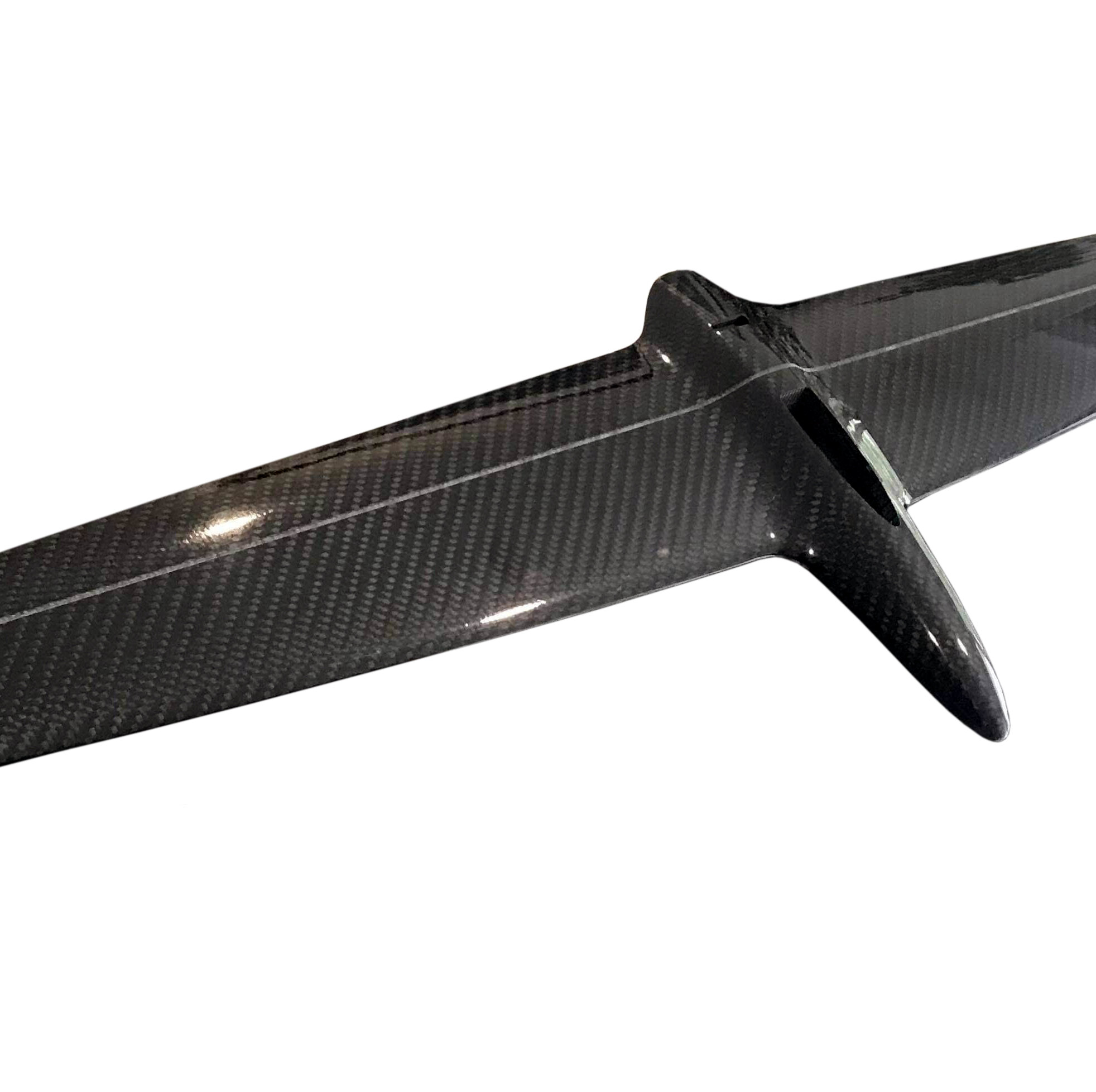
Swift Super Small (v2)
Our latest hydrofoil, specifically designed for light sailors or as a strong wind foil. It features an innovative tip and bulb design that are optimised for reducing drag when going fast.
$3,350 AUD + GST
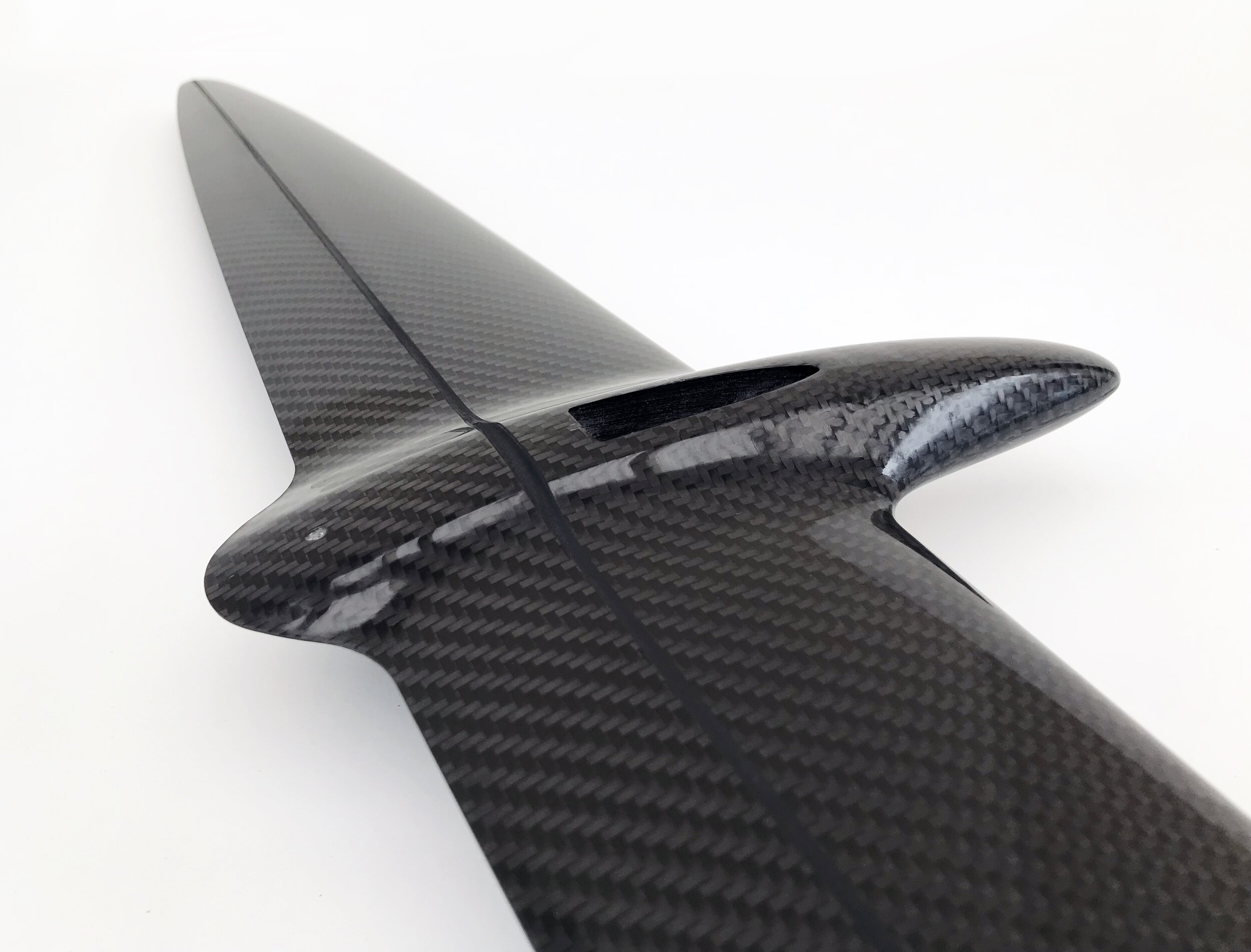
Swift Small (v3)
The ultimate all round medium wind foil, that has been winning regattas since the initial release. It is known for having great control features with a very wide performance window.
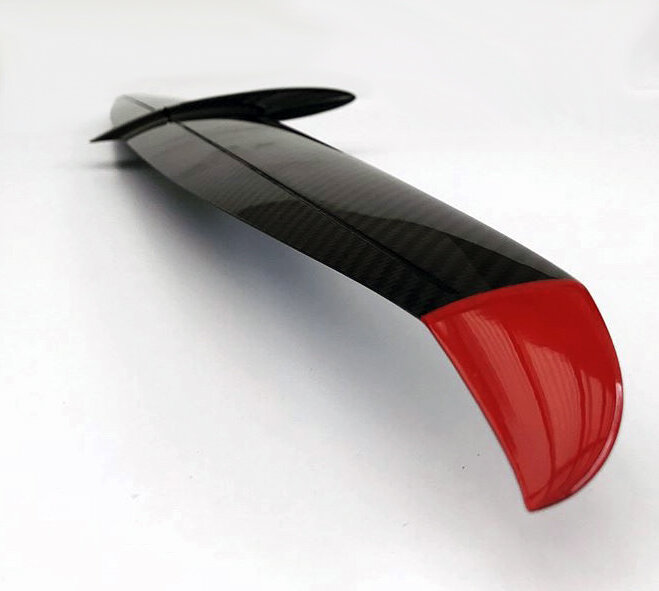
Swift Large (v2)
Excellent high lift foil that can be carried up range thanks to its thin section and very efficient profile. This foil is a proven race winner and a must for heavy sailors or light wind venues.
Swift Rudderfoils
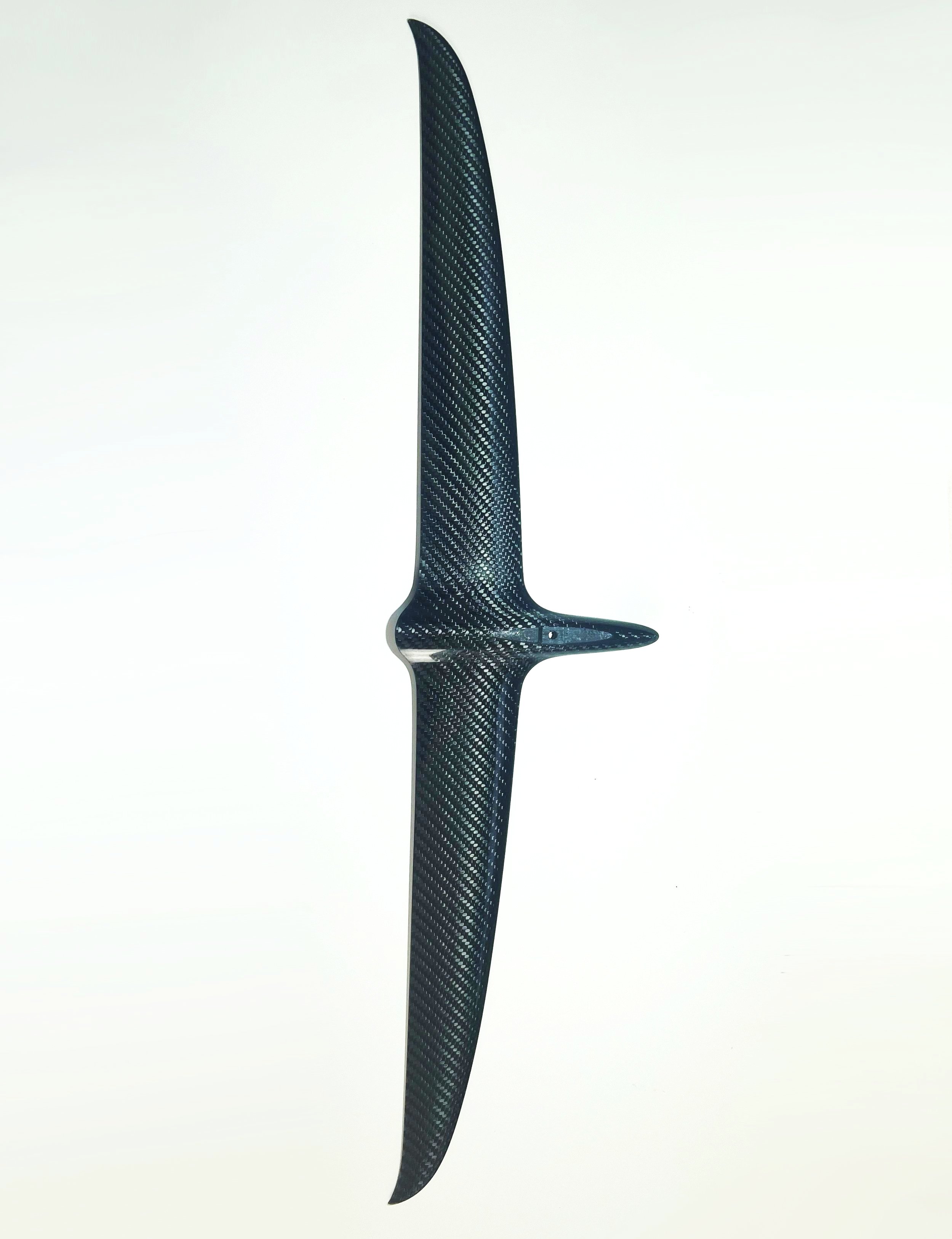
Swift Small Rudder (v1)
The Small rudder is based on the same theory as our Medium. It is a high aspect low drag shape designed to minimise drag and maximise lift offering great glide though ability for ease of foil tacking. Unlike other small rudders, ours still makes foil tacking a breeze while being tiny in size and super fast.
$2,200 AUD + GST
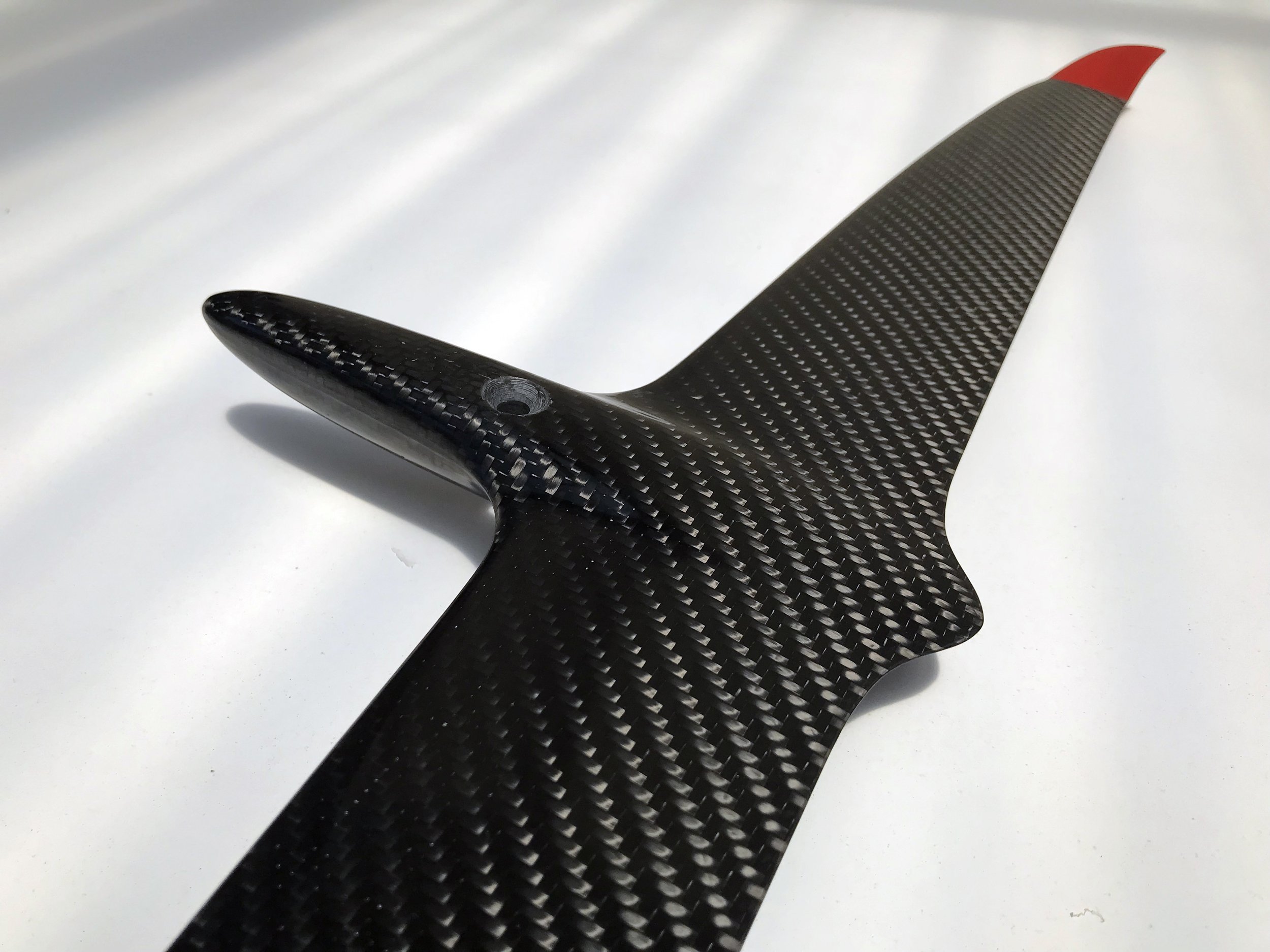
Swift Medium Rudder (v3)
Our Medium rudder is a well proven design that is a result of many years of development. Its short cord makes it very low drag however it generates plenty of lift thanks to its high aspect ratio. This foil will help make your foiling tacks easy and repeatable. $2,200 AUD + GST
Swift Verticals
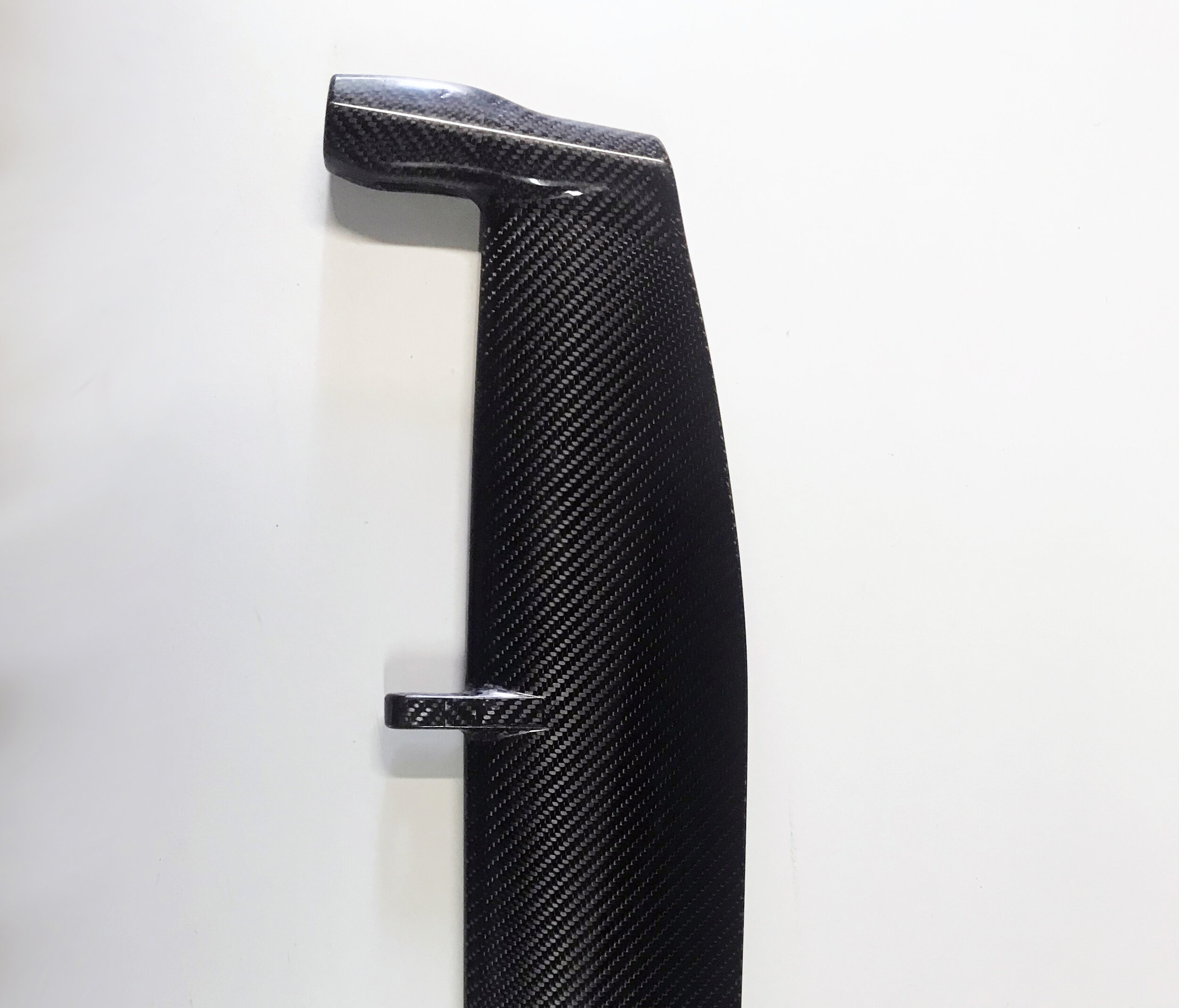
Swift HM Rudder Vertical (v3)
The v3 is our latest design to date. It further improves on the original v1/v2 designs with changes in the bottom 1/4 of the section. It is designed to be on the absolute limit of the materials to insure the ultimate performance from reduction in drag coefficient. It also includes a number of design features that combat the “all too common” rudder wash out problems. Made from pre/preg solid High Modulus carbon fibre construction, it is thermally stable and ultra stiff.
$4,100 AUD + GST
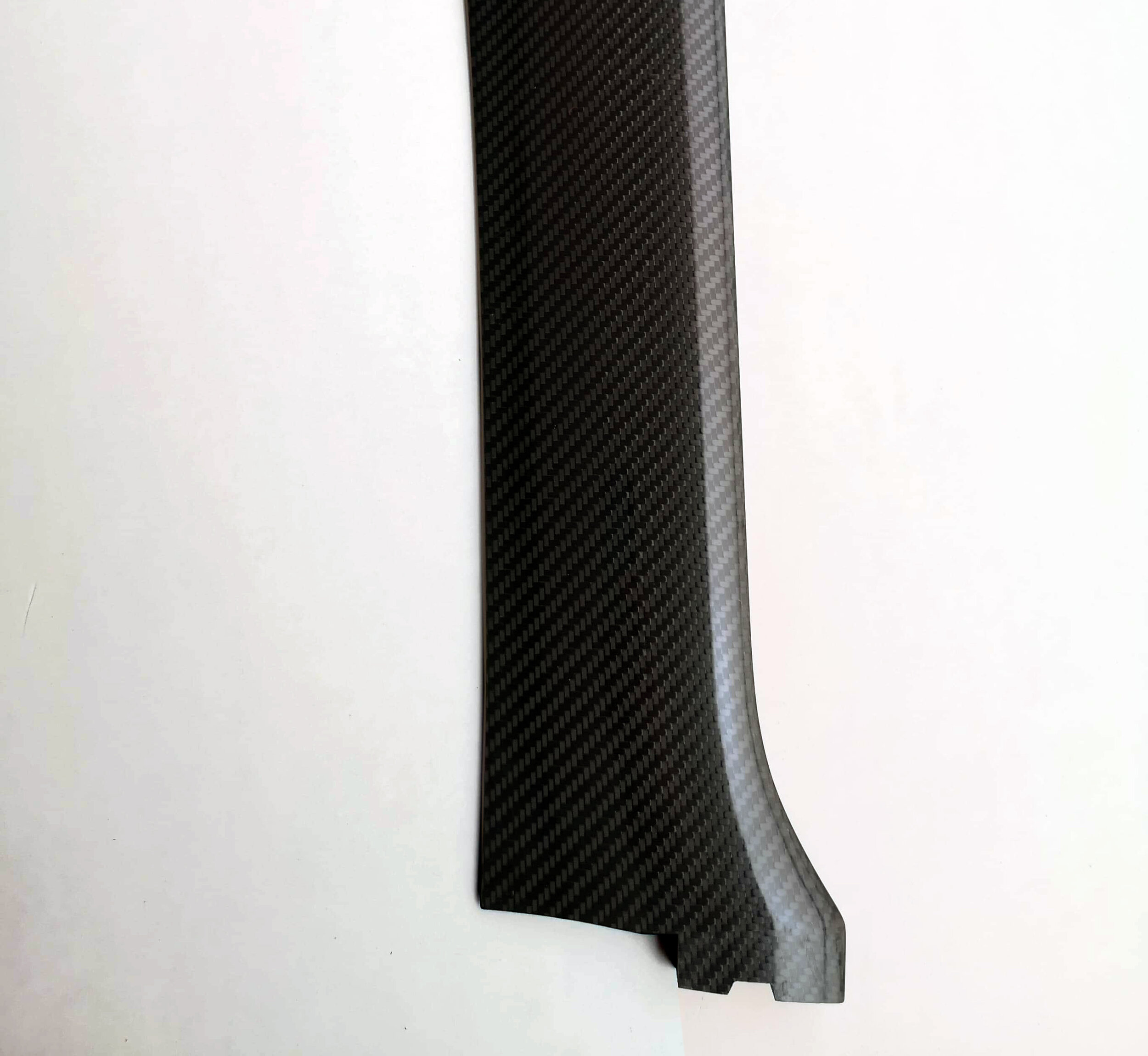
Swift HM Main Vertical (v1)
This is the thinnest main vertical on the market which offers significant reduction in drag by simply being smaller to reducing skin friction and displacement. Made from solid High Modulus carbon fibre construction, it is thermally stable and ultra stiff. Includes pushrod and bellcrank kit.
$4,500 AUD + GST

AOA Templates
These angle of attack measuring templates, are designed to fit our range of Swift main and rudder hydrofoils. With the help of this device, you will be able to determine the all important foil angle relative to waterline. $45 AUD + GST
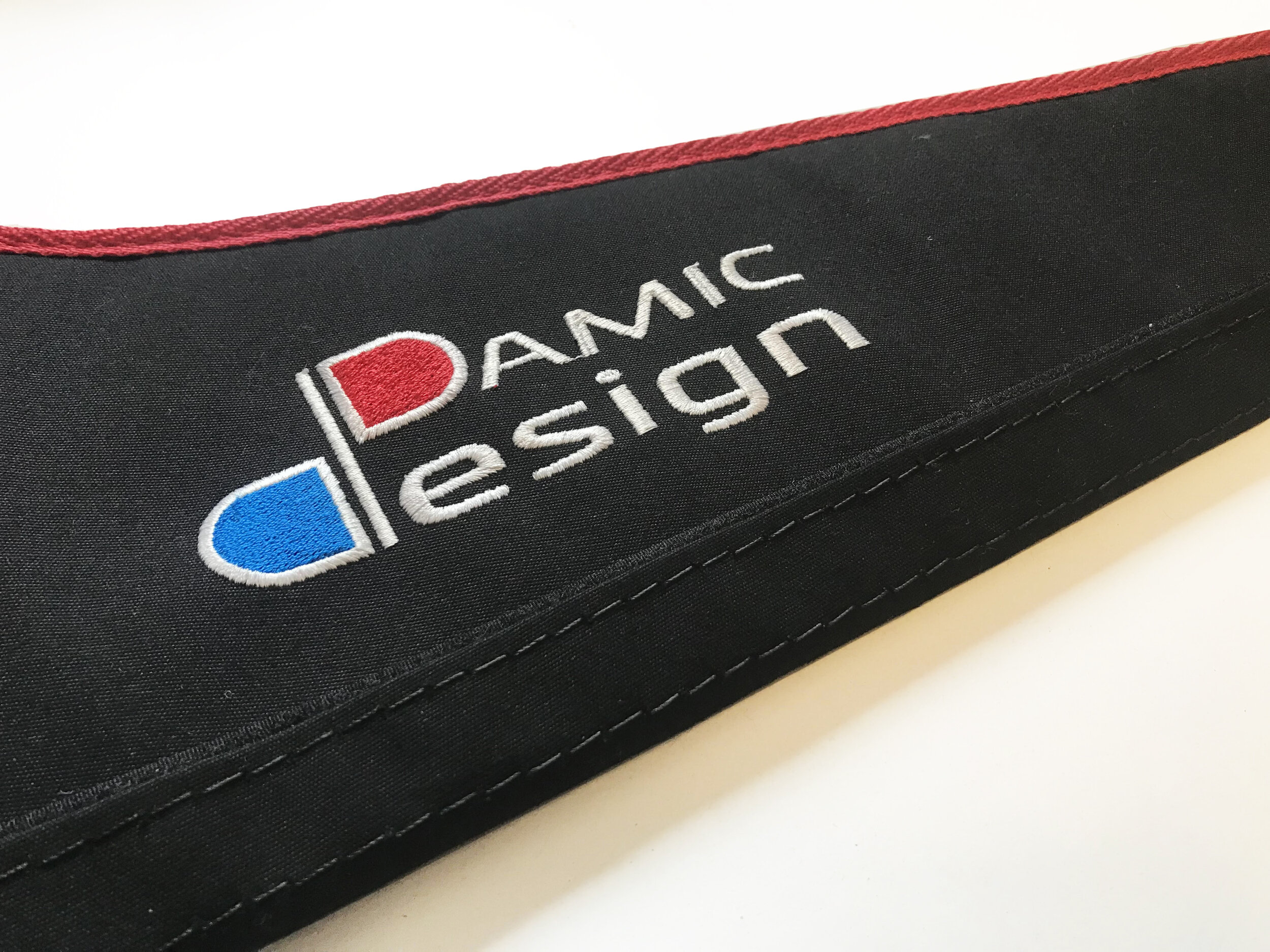
Swift Vertical Covers
Tailor made to suit Swift HM Main verticals and HM Rudder Verticals. These premium quality covers are Australian made using quality Dimension Polyant sailcloth. They features marine canvas outer skin and felt lining inside. $120 AUD + GST
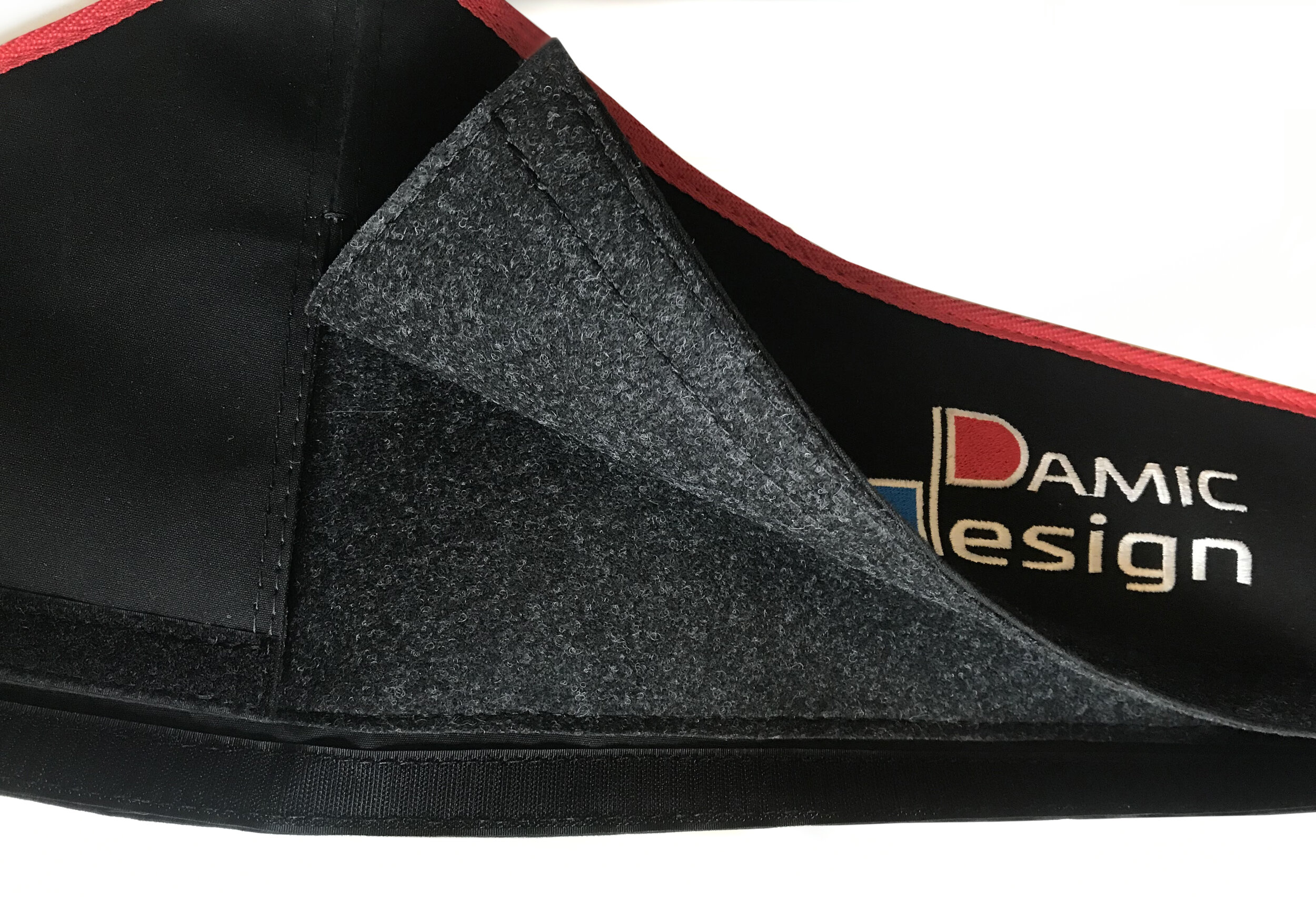
Swift Horizontal Covers
Suitable for Swift Super Small, Small and Large horizontal hydrofoils. These premium quality covers are Australian made using quality Dimension Polyant sailcloth. They features marine canvas outer skin, felt lining inside and Velcro closure to protect the trailing edges. $110 AUD + GST
- Moth Records
- Rules and Documents
- Meetings and Reports
- Netherlands
- New Zealand
- Switzerland
- United Arab Emirates
About the Boat
The international Moth Class is the fastest one Person Dinghy in the World.
IMCA – Committee
Shaun ritson / chief measurer, graeme southerland and franco greggi / executive committee.
Sponsored by
- AROUND THE SAILING WORLD
- BOAT OF THE YEAR
- Email Newsletters
- Best Marine Electronics & Technology
- America’s Cup
- St. Petersburg
- Caribbean Championship
- Boating Safety

Bladerider Moth Sailboat
- By Alan Block
- Updated: August 21, 2007
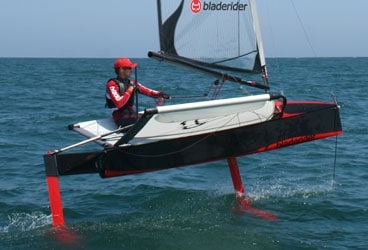
Even the staunchest keelboat devotee can’t help but be intrigued by them. They don’t have a trapeze, and they’ve only got one little sail, yet they sail at twice the true wind speed. They’re monohulls, but they move faster than a Tornado cat, sailing upwind as fast as 13 knots, downwind close to 30 knots. Jumping out of the water on ultra-light carbon foils in a 5-knot breeze, they’ll smoke almost anything else powered by sails.
They’re International Moths, and if Andrew “Amac” McDougall of Bladerider International has his way, they just may change the world of singlehanded dinghy sailing forever.
Ironically, the Moth class that has spawned the most groundbreaking development in hydrofoil technology is one of the ancient ones. Len Morris built his 11-foot Olive near Melbourne, Australia, in 1928. A year later, Joel Van Sant built a Moth in Elizabeth, New Jersey, to almost the same proportions. In both locations the small catboats were a hit, and numbers grew steadily due to the low cost of building such small, simple dinghies.
The class spread from the U.S. to Europe and from Australia to New Zealand, with huge design variations from fleet to fleet. Various national classes modified their rules slightly to encourage international competition, and with the International Yacht Racing Union’s acceptance of the class in 1972, the International Moth Class was born. The openness of the Class Rule, the first sentence of which reads, “the intention of these class rules is to give the designer and builder the fullest liberty in design and construction,” has resulted in much innovation and a variety of designs, including skiff Moths, pram Moths, scow Moths, skinny tube Moths, dinghy Moths, and now foiling Moths (which can be skiff Moths or scow Moths).
In 1999, Australian Dr. Ian Ward opened a can of worms that would change the class more profoundly than any prior development. Ward fitted horizontal hydrofoils to the bottom of the centerboard and rudder of a Moth and he found that the foils lifted the boat out of the water with ease. Catamaran and trimarans had already proven that three T-shaped foils worked, but conventional wisdom held that a dinghy with two foils would be far too unstable to be sailable. Ward quickly found out that the conventional wisdom was wrong, but devising a system to maintain ride height and control would take more time. Brothers John and Garth Ilett created and refined such a system in 2000 using a surface-sending wand to control the main foil’s lift.
Amidst intense intra-class squabbling, Rohan Veal used the Iletts’ creation to win the 2004 Moth World Championship with eight firsts in eight races. In one race, he beat the second place boat by ten minutes. With non-foiling, or “low riding,” Moths quickly approaching obsolescence, the biggest obstacle to competitive Moth sailors became obtaining their own foiling moths. The Iletts’ Fastacraft and a handful of other small, custom boatbuilders just couldn’t keep up with demand for their carefully constructed, all-carbon dinghies. That’s where McDougall came in.
A longtime Moth sailor, McDougall built his first Moth more than three decades ago. In early 2005, he purchases one of the Iletts’ foiling Moths and immediately knew that it was something special, a sailing experience that shouldn’t be constrained by the limited resources of a few custom builders. McDougall scraped up the money for his own Moth design/build business and set to work improving and simplifying existing designs and components to allow faster fabrication and shorter build times. He spent four months on the design of the foils, performing flow analysis and even writing his own foil-creating software. Once he completed the basic boat design, McDougall recruited Veal to help develop and market the boats, signed a partnership with composite specialist McConaghy Boats, and Bladerider International was born.
There are a handful of foiling Moths in the U.S., but the first two production Bladeriders landed here in April via air freight in boxes weighing about 100 pounds. Detroit sailor Bora Gulari bought the second U.S. boat, and in June he took me out for three days of “flight school.” I came late to sailing and started in big keelboats, so I lack the balance and quick reaction time with which lifelong dinghy sailors are blessed. I weigh around 220 pounds, a third bigger than most competitive Mothies, so in a way, I’m the ideal person to test the Bladerider. McDougall’s vision is not to create one more International Moth, it’s to bring the foiling experience beyond the aerospace engineers and tinkerer/athletes to the average sailor–someone just like me. Twenty minutes on the Bladerider taught me that I’ll never win a Moth World Championship, but I experienced a sensation totally new to me, something that could revolutionize the small boat world.
On the first day, moderate winds on a flat Lake St. Clair provided plenty of power, as Gulari proved less than 20 yards from the entrance to Bayview YC when he launched onto the foils and accelerated to 12 knots, upwind. When he turned down to a reach, our Sea Ray could hardly keep up. After a few minutes, I jumped into the water to take my turn. The first thing that struck me was the boom, in the head. The next was the incredible narrowness of the tiny hull. Dwarfed by large, trampoline-covered carbon wings, the 12-inch wide hull resembles a slab-sided torpedo. The designer realized that the hull would spend most of its time in the air, so he downsized it accordingly. The hull is covered with the most aggressive non-skid I’ve ever encountered, and as tippy as the boat is, that’s a good thing. The racks are works of art: clear-coated carbon sculptures covered with Dacron tramps, their width provides massive righting moment to counter the power from the big, windsurfer-inspired sail that sleeves over a thin-walled carbon mast.
Once I got moving, the instability vanished, even before I lifted free of the water. The foils generate substantial lift and stability at slow speeds, giving the pencil-thin hull the feel of a wide boat. Simple sail controls allowed me to concentrate on placing my body where Gulari told me, although the oversized mainsheet made easing the sail a bit stickier than it should have been. It’s a physical boat that requires lots of balance, and the small loads and efficient controls should be attractive to female and youth sailors.
A puff hit, and I practiced the dinghy mantra, “ease, hike, trim.” Hiking on the wing, I trimmed the sail and lifted almost imperceptibly out of the water. Another puff lifted me completely clear, and things went strangely silent. As a Melges 24 sailor, I’m used to going fast, but that speed is always accompanied by spray, vibration, and the sounds of crashing through waves. Speed on a Moth is completely different–drama free, peaceful, almost trance-inducing. Reality broke into my reverie when I let the boat heel too far to leeward. The boat crashed back into the water, and I hit the shrouds.
For days afterwards, my bruises would remind me of just how fast I’d been going.My test sail was like nothing I’d ever experienced on the water. In twenty minutes, the Bladerider opened my eyes to the possibilities of foilborne sailing. Foils have already invigorated the International Moth Class, with membership growth at a ten-year high, but it’s not just the IMCA that Bladerider is trying to revolutionize. McDougall’s operation currently builds three to four boats per week, but to goal is to double that output.
Priced at $14,000, the Bladerider isn’t cheap, but it provides an utterly new experience. Gliding above the water at double digit speeds, the only sound a faint hiss from the foils, you’ll be transformed. Going back to your loud, sloppy, slow, surface-bound craft might just be unthinkable.
For more about the Bladerider Moth, go to www.bladerider.com.au/
- More: foiling , McConaghy , moth , Sailboats
- More Sailboats

Nautor Swan Has A New Pocket Rocket

Pogo Launches its Latest Coastal Rocket

A Deeper Dive Into the Storm 18

2024 Boat of the Year Best Recreational Racer: Z24

Brauer Sails into Hearts, Minds and History

Anticipation and Temptation

America’s Offshore Couple

Jobson All-Star Juniors 2024: The Fast Generation

- Digital Edition
- Customer Service
- Privacy Policy
- Cruising World
- Sailing World
- Salt Water Sportsman
- Sport Fishing
- Wakeboarding

UK International Moth Site
The fastest singlehanded race dinghy
The International Moth is a high-speed , development sailing class with 90 years of continuous innovation . The modern day carbon fibre boats reach speeds of over 30 knots on hydrofoils. With the available training newcomers are becoming competitive in a short period.
Class Events
Fixtures for 2025
Get a boat, Join the Class , come and race the best!
Become a Mothie
(n.) One who is very interested in the dynamics of International Moths, particularly the foiling elements. Similar to other high performance sailors but with more tools.
It is fair to say the Moth really is the choice of boat for almost anyone, here’s a handy guide by Neil Baker to see where you would fit in…
The UK Committee are all highly enthusiastic volunteers with a deep love for the Moth who ensure you get the most from every event. We are currently a little short on personnel, if you would like to play a part then we would love to hear from you.
Chairman: Alex Adams Secretary/Treasurer/Membership: Graham Simmonds Events: Simon Hiscocks Measurement: Ricky Tagg Class Training: Ross Harvey Webmaster: Kyle Stoneham
Class measurers are located across the UK, if you need a certificate and don’t know where to go let us help…
Latest International Moth Class Rules
Join the Class
Noble Marine Parkstone Moth GP 2019
by Jason Belben. A fleet of 22 International Moths turned out for the second Noble Marine Grand Prix event of the year at Parkstone Sailing Club, Poole… Read more “Noble Marine Parkstone Moth GP 2019”
2018 UK National Champion – Jim McMillan!
The International Moth UK National Championships has come to a close in Thorpe Bay, Essex with stunning sunshine and largely light winds the dominant forces in the… Read more “2018 UK National Champion – Jim McMillan!”
Noble Marine and the Moths: Interview with Phil Kilburn
Noble Marine’s Phil Kilburn visits the International Moth UK Nationals at Thorpe Bay © Mark Jardine We spoke to Phil Kilburn of Noble Marine Insurance during the… Read more “Noble Marine and the Moths: Interview with Phil Kilburn”
Sponsors & Partners
Noble marine.
Long time sponsors of the UK Moth class, Noble Marine continue to support our events and provide members with exceptional cover. Get in touch with them for your insurance
Wetsuit Outlet
Wetsuit Outlet are Europe’s largest supplier of watersports clothing and equipment and title Sponsor of the 2019 Moth Nationals at Castle Cove sailing club. Their life long passion for sailing and commitment to stock the latest clothing and hardwear is why this partnership works so well.
Moth Manufacturers
Maverik moth – fluid composites.
Brand new for 2022, the Maverik Moth is the culmination of over three years of development from Fluid Composites . The first of the Moth 2.0 designs to come from the UK, the Maverik brings F1 tech to the class. The R&D program for 2022 introduces some exciting innovations leading up to the 2023 worlds in Weymouth.
Maguire boats
The Maguire Exocet is the current world leading Moth, designed by Kevin Ellway and manufactured by SimonMaguire in New Milton, Hampshire UK. The Exocet currently holds all major UK, European and World Championship titles.
Aardvark Racing
Mike Cooke has been sailing and building moths since before the foiling era, his innovative approach has ensured that the Rocket design remains competitive. Dylan Fletcher has proven this by taking the UK championship in 2017 and more recently the 2018 Foiling Week title on the SSD solid wing platform beating the highest level competiton.
Lennon Thinnair
It’s been a long time coming but reports that the first production Thinnairs are almost ready will be music to the ears to those on the waiting list. Mike Lennon a highly accomplished moth sailor and sail maker has been testing the prototype with some success during 2018.
So much of the moth class history had gone missing. Few people appreciated the interest there would be in old yearbooks, photos, design drawings and articles. But it seems Mothies are horders and since we posted this section, over 200 photos and scans have been sent in.
This section features yearbooks, brochures, posters etc. And the ‘archive photos’ pages have period photos. Continue reading “Archives” →
- Yachting World
- Digital Edition

World’s coolest yachts: International Moth
- September 2, 2021
We ask top sailors and marine industry gurus to choose the coolest and most innovative yachts of our times. Paul Larsen nominates the International Moth

“There are so many boats out there that have cool aspects and yet remain horribly compromised or are no longer relevant. After a ridiculous amount of consideration (and excluding our own creations) I have to go for the foiling International Moth,” says the world’s fastest sailor , Paul Larsen.
“Like foiling or not, you can’t shoot the messenger! As a cool boat it stands on its own, and for what it has since inspired.

The International Moth has done more than any class to raise the profile of sailing hydrofoils. Photo: Thierry Martinez/Sea&Co
“The concept just works so well. Its performance and accessibility inspired sailors, backyard builders, designers and performance sailing in general.
“Buy a good one to race at your club or against the best of the best.
“This little foiler came to the local skiff/cat party and smacked all the old cool kids down. Things change when that happens.”
Make sure you check out our full list of Coolest Yachts.
International Moth stats rating:
Top speed: 30.7kn LOA: 3.4m Launched: 1971 Berths: 0 Price: €20,000 Adrenalin factor: 90%
Paul Larsen
Australian Paul Larsen is the world’s fastest sailor. In 2012 he sailed Vestas Sailrocket II to a sailing speed record of 65.45 knots .
His first taste of multihull speed was in the Eighties, delivering the 86ft Commodore Explorer to Japan with Skip Novak .
He competed in major ocean racing events before developing Sailrocket to make its record-breaking run.
If you enjoyed this….
Yachting World is the world’s leading magazine for bluewater cruisers and offshore sailors. Every month we have inspirational adventures and practical features to help you realise your sailing dreams. Build your knowledge with a subscription delivered to your door. See our latest offers and save at least 30% off the cover price.

Support our hydrofoil educational content for free when you purchase through links on our site. Learn more
[2023] Hydrofoil Yacht: The Ultimate Guide to Sailing on Foils
- November 1, 2023
- Hydrofoil Basics
Quick Answer: A hydrofoil yacht is a sailboat equipped with wing-like foils that lift the hull out of the water as it gains speed. This reduces drag, increases speed, and provides a smoother ride. Hydrofoil yachts can be retrofitted on both monohull and multihull sailboats, with different types of foils used for stability and control.
Welcome to Hydrofoiling™, where we bring you all the latest and greatest information about hydrofoil boarding. In this comprehensive guide, we’ll dive into the world of hydrofoil yachts, exploring their history, configurations, classes, and more. Whether you’re a seasoned sailor or a curious beginner, this article will provide you with expert advice and insights into the exciting world of hydrofoil yachts.
Table of Contents
Quick answer, quick tips and facts, background: the evolution of hydrofoil yachts, types of hydrofoil yachts, hydrofoil classes: from moths to ac75, hydrofoil yacht brands and models, advantages and disadvantages of hydrofoil yachts.
- Recommended Links
- Reference Links
A hydrofoil yacht is a sailboat equipped with wing-like foils that lift the hull out of the water as it gains speed. This lifting action reduces the wetted area of the hull, minimizing drag and allowing the yacht to achieve higher speeds. Hydrofoil yachts can be retrofitted on both monohull and multihull sailboats, with different types of foils used for stability and control.
Shopping Links: Check out hydrofoil yacht products on Amazon | Shop hydrofoil yacht on Walmart | Etsy hydrofoil yacht products
- Hydrofoil yachts use foils to lift the hull out of the water, reducing drag and increasing speed.
- Different types of foils, such as T foils, C foils, S foils, and L foils, are used for stability and control.
- Hydrofoil yachts can be retrofitted on both monohull and multihull sailboats.
- The International Moth class is one of the most widespread uses of hydrofoils in sailboats.
- Hydrofoil yachts can achieve impressive speeds, with some reaching over 50 knots.
Hydrofoil technology has been around for over a century, with the first patent for a hydrofoil boat filed in 1898 by Italian engineer Enrico Forlanini. Since then, hydrofoil yachts have undergone significant advancements, transforming the sailing experience and pushing the boundaries of speed and performance.
The concept behind hydrofoil yachts is simple yet ingenious. By using wing-like foils mounted under the hull, these yachts can lift themselves out of the water as they gain speed. This lifting action reduces the wetted area of the hull, minimizing drag and allowing the yacht to glide effortlessly through the water.
Hydrofoil yachts come in various configurations, each designed to optimize performance and stability. Let’s explore some of the most common types of hydrofoil yachts:
Monohull Hydrofoil Yachts : Monohull hydrofoil yachts feature a single hull and employ a “ladder” arrangement of hydrofoils. These hydrofoils typically have a dihedral angle of around 50 degrees and are complemented by a stabilizing rudder foil. This configuration provides stability and control, allowing the yacht to sail smoothly on foils.
Multihull Hydrofoil Yachts : Multihull hydrofoil yachts, such as catamarans and trimarans, offer increased stability and performance. These yachts use wider planforms, allowing for greater lift and control. Some multihulls utilize three foils, with two main forward foils providing lift and a horizontal foil on the rudder for additional control.
Hydrofoil Catamarans : Hydrofoil catamarans, also known as foilcats, combine the stability of a catamaran with the speed and efficiency of hydrofoils. These yachts can achieve impressive speeds while maintaining excellent stability, making them popular choices for racing and recreational sailing.
Hydrofoil technology has found its way into various sailing classes, revolutionizing the way we sail. Let’s take a closer look at some of the notable hydrofoil classes:
International Moth : The International Moth class is one of the most widespread uses of hydrofoils in sailboats. These single-handed dinghies feature foiling capabilities, allowing sailors to achieve incredible speeds and maneuverability. The class has seen rapid growth since 2001, with carbon fiber foils and advanced design techniques pushing the boundaries of performance.
Waszp : The Waszp class is similar to the International Moth class but utilizes aluminum foils instead of carbon fiber. This makes the Waszp more accessible to a wider range of sailors while still providing the exhilaration of foiling.
AC75 : The AC75 is a foiling monohull sailboat class used in the 2021 America’s Cup. These impressive yachts can reach speeds of up to 50 knots, showcasing the incredible potential of hydrofoil technology in the world of competitive sailing.
IQFoil : The IQFoil windsurfer class was selected by World Sailing for the 2024 Summer Olympics. These windsurfers feature hydrofoils, allowing athletes to glide above the water and achieve impressive speeds.
IMOCA 60 : Originally designed as non-foiling offshore racers, the IMOCA 60 class has embraced hydrofoil technology. These yachts now feature S-shaped daggerboard foils, providing partial foiling capabilities and enhancing performance in various conditions.
F50 : The F50 sailboat class is used in the SailGP series and is the first sailboat class to break the 50-knot barrier during a race, with a top speed of 52.2 knots. These high-performance catamarans showcase the incredible speed and agility that hydrofoil technology can offer.
Several brands have embraced hydrofoil technology, offering a range of hydrofoil yachts to cater to different sailing preferences. Here are some notable hydrofoil yacht brands and models:
Gunboat : Gunboat is a renowned brand in the world of luxury hydrofoil yachts. Their models, such as the Gunboat 68 and Gunboat 72, combine performance, comfort, and elegance, providing an exceptional sailing experience.
GC32 : The GC32 is a hydrofoil catamaran designed for high-performance racing. This foiling catamaran offers thrilling speeds and precise control, making it a favorite among competitive sailors.
AC72 and AC45f/AC50 : These hydrofoil catamarans were used in the America’s Cup, showcasing the cutting-edge technology and innovation in the world of hydrofoil yachts. These yachts pushed the boundaries of speed and performance, captivating sailing enthusiasts worldwide.
Nacra 17 and Nacra F20 : Nacra is a well-known brand in the world of multihull sailing, and their Nacra 17 and Nacra F20 models feature hydrofoil capabilities. These yachts offer a perfect balance of speed, stability, and maneuverability, making them popular choices for recreational and competitive sailing.
Hydrofoil yachts offer a range of advantages that make them appealing to sailors seeking speed, performance, and an exhilarating sailing experience. However, they also come with some drawbacks. Let’s explore the pros and cons of hydrofoil yachts:
Advantages:
Increased Speed : Hydrofoil yachts can achieve impressive speeds, thanks to reduced drag and increased lift. This allows sailors to cover more distance in less time, making hydrofoil yachts ideal for racing or simply enjoying the thrill of speed on the water.
Smooth Ride : By lifting the hull out of the water, hydrofoil yachts provide a smoother and more comfortable sailing experience. The reduced contact with the water minimizes the impact of waves and chop, resulting in a smoother ride even in rough conditions.
Improved Efficiency : Hydrofoil yachts are more efficient than traditional sailboats, thanks to reduced drag and improved lift. This increased efficiency translates to better performance and reduced energy consumption, making hydrofoil yachts an environmentally friendly choice.
Disadvantages:
Complex Design : Hydrofoil yachts require a more complex design compared to traditional sailboats. The addition of foils and the associated control systems can increase the complexity of the yacht, requiring more maintenance and potentially higher costs.
Learning Curve : Sailing a hydrofoil yacht requires a certain level of skill and experience. The handling and control of a hydrofoil yacht can be more challenging compared to traditional sailboats, requiring sailors to adapt to the unique characteristics of foiling.
Higher Costs : Hydrofoil yachts, especially high-performance models, can come with a higher price tag compared to traditional sailboats. The advanced technology, materials, and design required for hydrofoil yachts contribute to their higher cost.
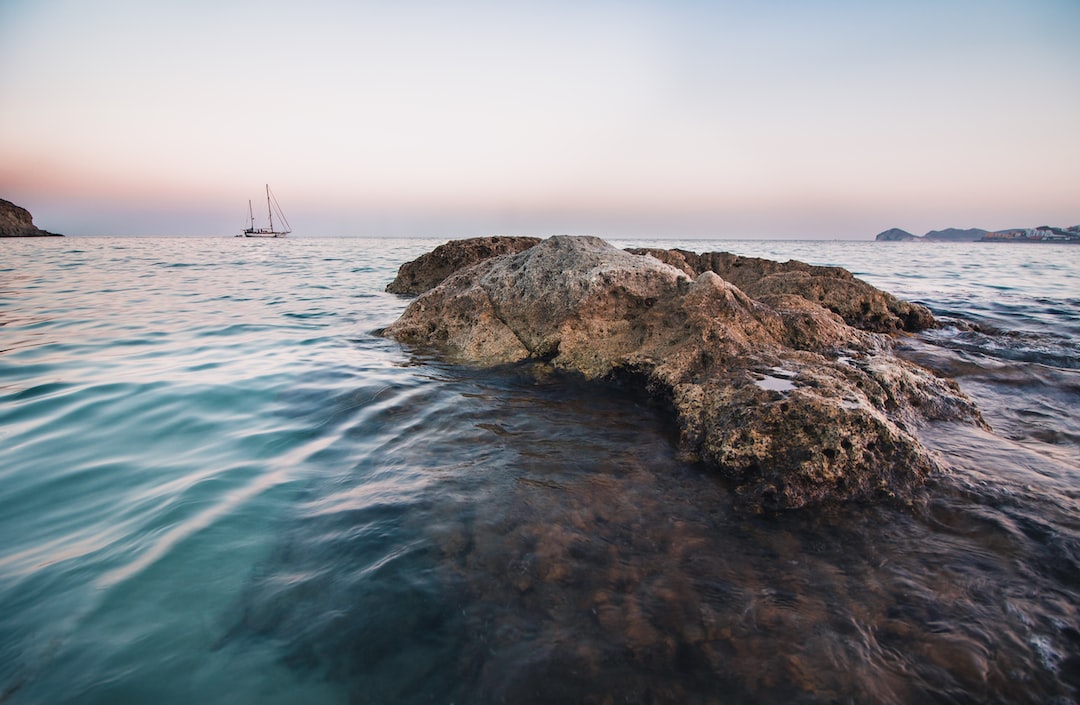
How fast is the hydrofoil racing yacht?
Hydrofoil racing yachts can achieve impressive speeds, with some models reaching over 50 knots (57.5 mph or 92.6 km/h). The F50 sailboat class, used in the SailGP series, holds the record for the fastest sailboat class, with a top speed of 52.2 knots (60 mph or 97 km/h).
What does a hydrofoil do to a boat?
A hydrofoil lifts the hull of a boat out of the water as it gains speed. This reduces the wetted area of the hull, minimizing drag and allowing the boat to achieve higher speeds. The lifting action of the hydrofoil also provides a smoother ride by reducing the impact of waves and chop.
Read more about “… Hydrofoil Catamaran: The Ultimate Guide to Foiling on Water”
How fast do hydrofoil boats go?
Hydrofoil boats can reach impressive speeds, depending on their design and purpose. Racing hydrofoil yachts can achieve speeds over 50 knots (57.5 mph or 92.6 km/h), while recreational hydrofoil boats can reach speeds of 20-30 knots (23-34.5 mph or 37-55.5 km/h) or more.
Why don’t boats use hydrofoils?
While hydrofoils offer significant advantages in terms of speed and efficiency, they also come with certain limitations. The complex design and higher costs associated with hydrofoils can be prohibitive for some boat owners. Additionally, the handling and control of hydrofoil boats require a certain level of skill and experience, making them less accessible to novice sailors.
Read more about “… Why do boats not use hydrofoils?”
Hydrofoil yachts have revolutionized the sailing experience, offering increased speed, improved efficiency, and a smoother ride. Whether you’re a competitive sailor looking for the thrill of high-speed racing or a recreational sailor seeking a more exhilarating sailing experience, hydrofoil yachts provide an exciting and innovative option.
Recommended Links:
- Hydrofoil History
- Advanced Hydrofoiling Techniques
- Hydrofoil Equipment Reviews
- How Do Hydrofoils Work on Boats? 2023
Reference Links:
- Sailing Hydrofoil – Wikipedia
- Gunboat Official Website
- Nacra Official Website
- SailGP Official Website
- America’s Cup Official Website
Now that you have a comprehensive understanding of hydrofoil yachts, it’s time to set sail and experience the thrill of foiling firsthand. Whether you’re racing on the high seas or cruising along the coast, a hydrofoil yacht will take your sailing adventures to new heights. Happy foiling!
Disclaimer: The information provided in this article is based on research and personal experience. Hydrofoiling™ is not affiliated with any specific brand or product mentioned in this article. Always consult with experts and follow safety guidelines when engaging in hydrofoil activities.
Review Team
The Popular Brands Review Team is a collective of seasoned professionals boasting an extensive and varied portfolio in the field of product evaluation. Composed of experts with specialties across a myriad of industries, the team’s collective experience spans across numerous decades, allowing them a unique depth and breadth of understanding when it comes to reviewing different brands and products.
Leaders in their respective fields, the team's expertise ranges from technology and electronics to fashion, luxury goods, outdoor and sports equipment, and even food and beverages. Their years of dedication and acute understanding of their sectors have given them an uncanny ability to discern the most subtle nuances of product design, functionality, and overall quality.
Related Posts
Can you put a hydrofoil on any board [2024] 🏄♂️.
- March 13, 2024
Is Hydrofoil Harder Than Surfing? [2024] 🏄♂️
- March 3, 2024
Are Hydrofoil Boards Hard to Ride? [2024] 🏄♂️
Leave a reply cancel reply.
Your email address will not be published. Required fields are marked *
Add Comment *
Save my name, email, and website in this browser for the next time I comment.
Post Comment
Trending now
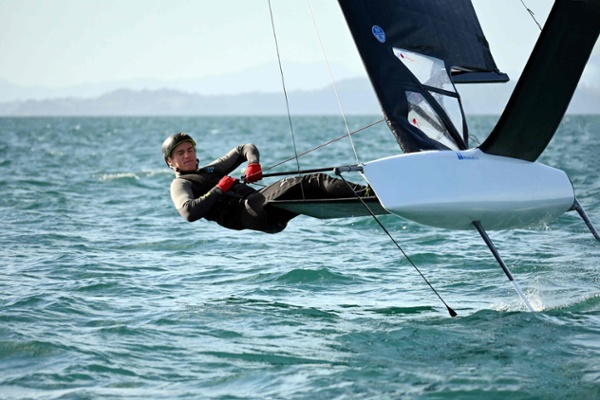
Bieker Moth
When speed matters..
When a group of top navel engineers, designers and builders come together with very few design restrictions, the meaning of fast is redefined. Meet the Bieker Moth.
Find out more in the Features section below
BM-V3 Specifications
Length overall 3.355 m
Beam 2.250 m
Max. luff length 5.185 m
Max. mast length 6.250 m
Hull weight Unrestricted, general weight range 10-20kgs
Rigged Weight as little as 26kgs
Sail area 8.25m
Optimum skipper weight 60-80kgs
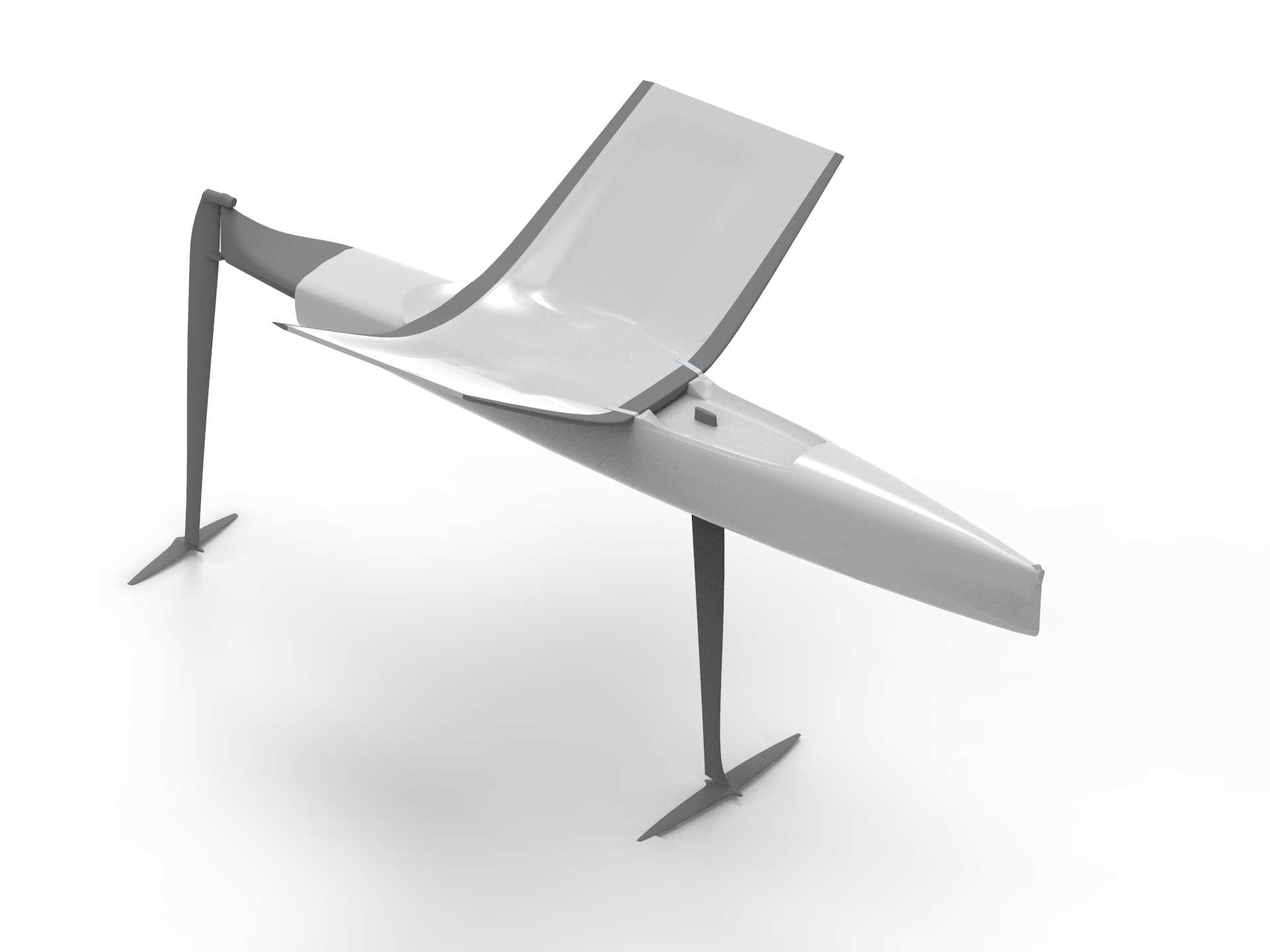
Producing complete consistency is our goal. Every part is checked, weighed and recorded so we have a complete build record for each boat.
Sailors can also apply their own expertise to develop their boats further.
Spare parts can be fitted easily and means that upgrade parts can be adapted to existing boats.
A comparatively high-volume displacement shape, with a rocker profile provides an easy, low ride handling and un-sticky take-off characteristics.
The sleek hull shape (BM-V1) is designed to optimise aerodynamic flow (this is based on a recent 2023 flow analysis).
An aircraft grade honeycomb is used to produce a significantly light weight yet stiff boat. The maximum stiffness to weight ratio has been achieved.
The laminate is a custom-made spread tow tri-axel pre-preg carbon fibre that reduces weight while adding torsional stiffness. High load points have been reinforced with unidirectional carbon fibre patching.
Built from a hi-temp carbon tooling prepreg, this mould helps to produce exceptional hull accuracy and consistency which means lighter hulls and precise alignment of all the components.
Wing Beams and Solid Wings
Using minimal surface area, the planform minimises aerodynamic drag while maximising heeling moment.
The wing is designed to let sailors impart kinetic energy into the boat during tacks and gybes.
Stiff single piece wing beams help maximise heal to windward.
The wing beams are high modulus pre-preg carbon, designed to eliminate the need for compression struts and unnecessary joins.
This rigid wing frame also reduces windage and streamlines the planform.
BM-V3 Wing Shape and Section Enhancements
• An adjustment to the wing angle which increases the righting moment when sailed at the optimum heel angle.
• Single one-piece beams used for ultimate strength and stiffness, with the fore and aft beam section shape refined to encourage attached flow.
The outer beam is now incorporated into the wing decks.
• A redesign of all connections between beams, wing decks and deck.
• A reduction of the planform areas.
• A slight reduction in weight.
Designed with a deck-sweeping rig in mind, a forward deck fairing on the deck aft of the mast enables the sail to be sealed onto the deck.
BM-V3 Deck Interface Enhancement
An incredibly clean wing and deck area enables easy maneuverability along with aero drag reduction. The new deck shape completely conceals the controls with the only rope visible is from the cleat plate to the outboard end of the tramp. Even the cleats themselves are mostly hidden.
BM–V3 Below Deck Enhancement
Space under the deck is used to house all the systems and controls. This removes drag created from the control lines on the wings and keeps the weight centralised. Now with a larger systems area, all systems move more efficiently which make for easier adjustments.
The gantry’s defined lines and curves, combined with its 3-point attachment system ensures a lightweight that optimises airflow off the stern. As per the Class rule, the gantry is not watertight. It will hold water, including when the boat is at rest.
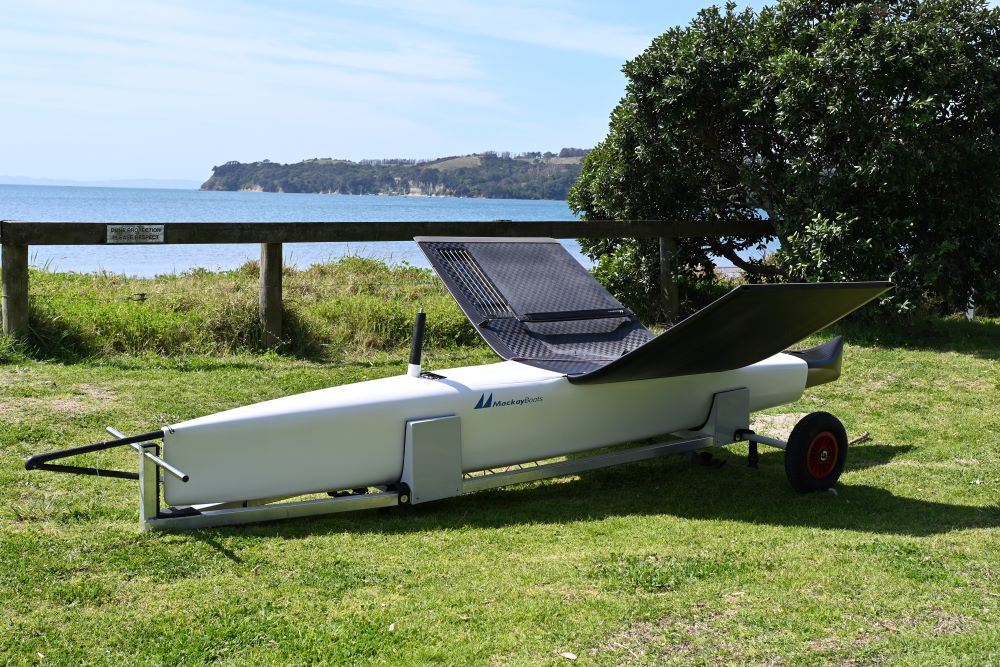
The Mackay Bieker BM-V3 Revealed
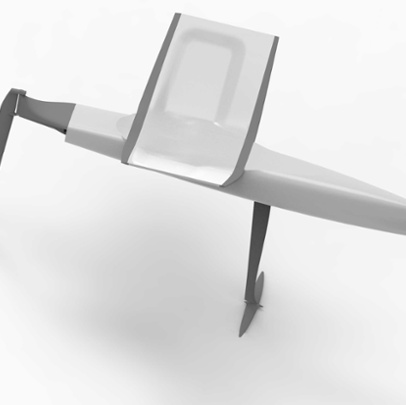
Mackay Bieker BM V3 - deck interface
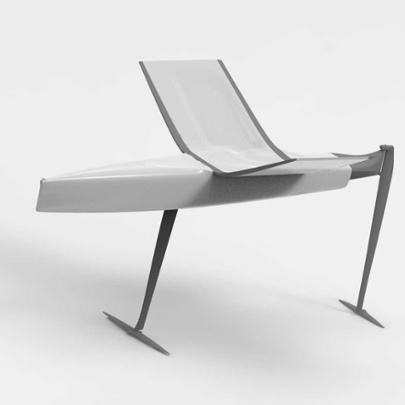
Mackay Bieker BM V3 Wing shape
What is the difference between standard v'slow drag verticals.
The low drag verticals have less area. They are shorter and also narrower in some areas. As a result they are also lighter.
What is the difference between the horizontals?
Area and section shape. More area has more drag, but it also lifts the boat sooner in lighter winds. Section shape varies the amount of lift and drag. For heavier air foils the emphasis is more on reducing drag. On lighter air foils lift becomes more important, but not if it increases drag too much. It is always a compromise which is why development will always continue in the quest for more lift with less drag.
Why do some people choose soft wings v's solid wings?
Solid wings have some handling advantages and aerodynamic advantages.
Soft wings are lighter.
For bigger sailors, the trade off is often in favour of having a lighter platform, whereas lighter sailors can take the aero gain of the solid wings.
How do I choose which deck fairing to use?
To get the most aerodynamic gain, the deck faring should match or be a little longer than the foot length. Theoretically, longer is better, but it is also hard to sail with. It is no problem to cut down the length of a deck fairing to match your sail should you change at a later date.
Why are there 2 different travel boxes?
The Hi-Top box is needed if you want your solid wings to fit into a box with your boat. Alternatively you can use the standard box and package the wings separately if you don’t travel a lot.
Air freight is charged by volume, so it costs less if you use the smaller box and pack the wings separately. However, this also has its risks, so we recommend the Hi-top box if you are regularly freighting your boat to reduce the chance of your wings being damaged or lost.
Sorry, we can't find and posts.
Are you sure you want to change currency?
- Formula Kite Class
- iQFOiL Class
- America’s CUP


- CLASSIFIEDS
- NEWSLETTERS
- SUBMIT NEWS

How to home-build a Moth - James Sainsbury's step-by-step guide!
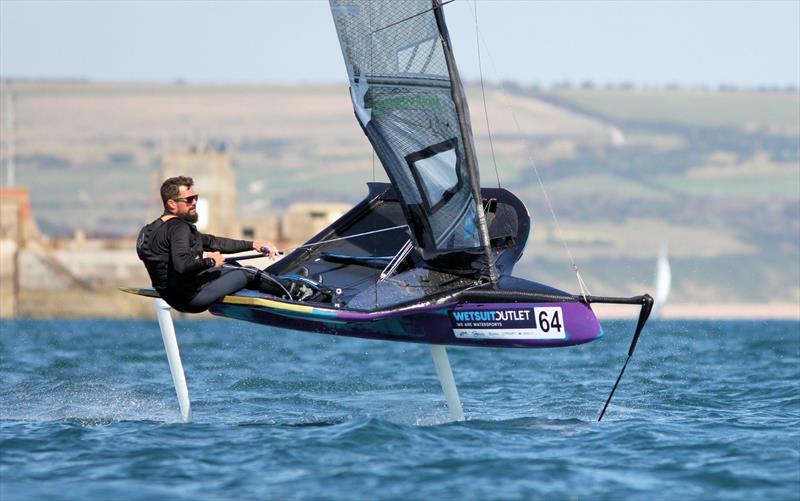
Related Articles
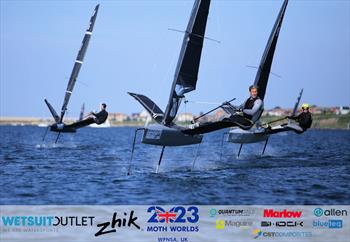

CLASS CULTURE
THE JUNIOR FOILER
SAILGP PARTNERSHIP
Buy a waszp.

Latest News
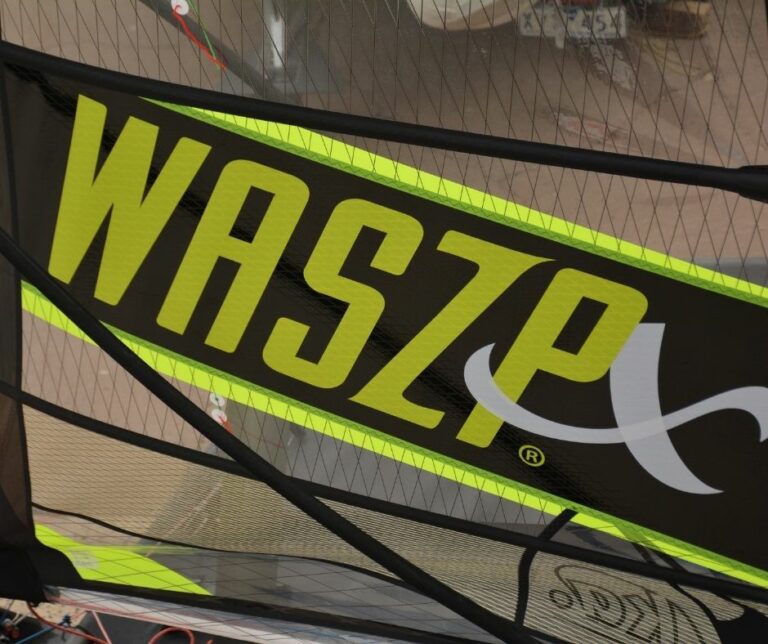
NEW Product – The WASZP_X – The Ultimate Junior Foiler
Launch – VIDEO: On the back of the extremely successful 2021 European WASZP Games and return to international competition,...

ROCKWOOL Joins the Swarm for WASZP Games 2024 in Sandefjord: City of Foiling
WASZP and Sandefjord Seilforening are delighted to welcome ROCKWOOL onboard as event partner for the WASZP Games 2024. The...

WASZP CLASS SAILS INTO NEW HEIGHTS WITH RECORD PARTICIPATION AND GLOBAL EXPANSION
The WASZP Class, renowned as the premier one-design foiling dinghy globally, is making waves with unprecedented growth and record-breaking...

WASZP Games 2024 – ENTRY OPEN!
Entry is open for the 2024 WASZP Games in the beautiful Sandefjord, Norway. Why not treat yourself to an...
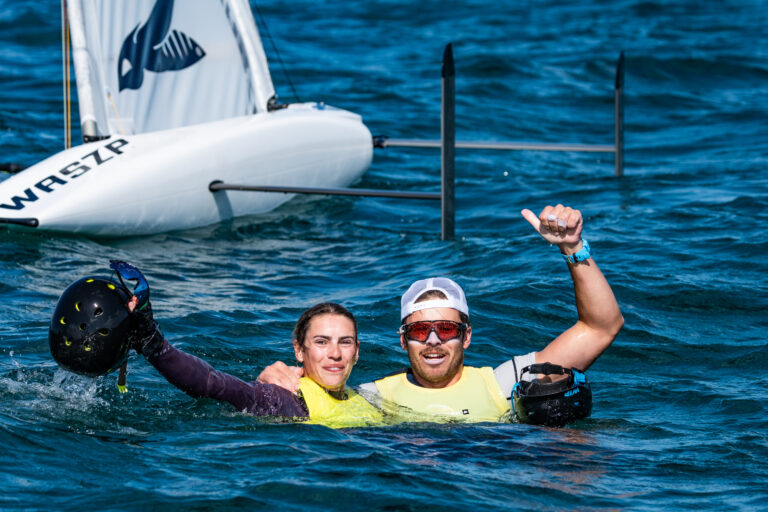
Street sails into record books to claim 2nd WASZP Games title
Sam Street has sailed a near-flawless WASZP Games campaign to be the first sailor to claim two WASZP Games...
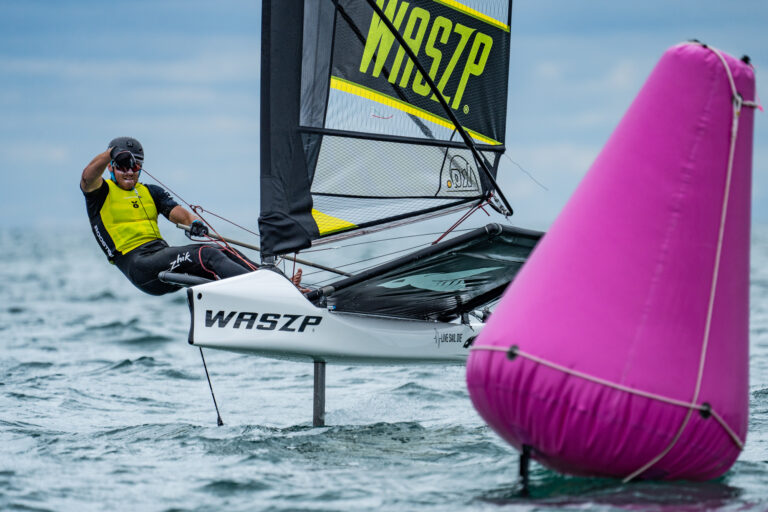
Lightning can strike twice – Street has firm grip on WASZP Games
New Zealand sailor Sam Street has one hand on his second consecutive WASZP Games in Sorrento, Australia. After losing...
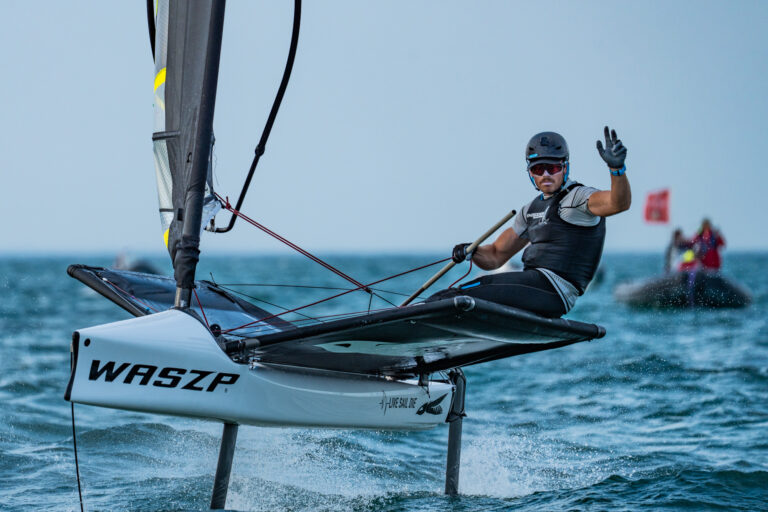
Patience pays off as Sam Street dominates day 1
The 2023 International WASZP Games roared to life at Sorrento, witnessing Sam Street’s commanding performance, seizing two victories in...
NUMBER OF COUNTRIES
Fastest speed @jackson macauley, boats entered @ waszp games 2024.
TESTIMONIALS
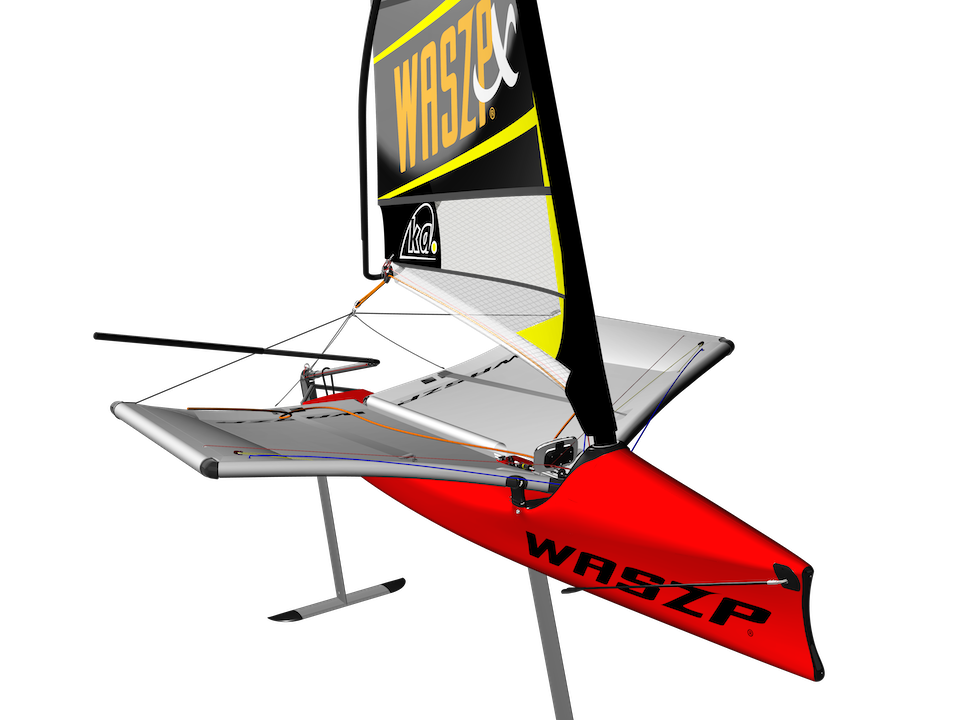
SAILGP INSPIRE
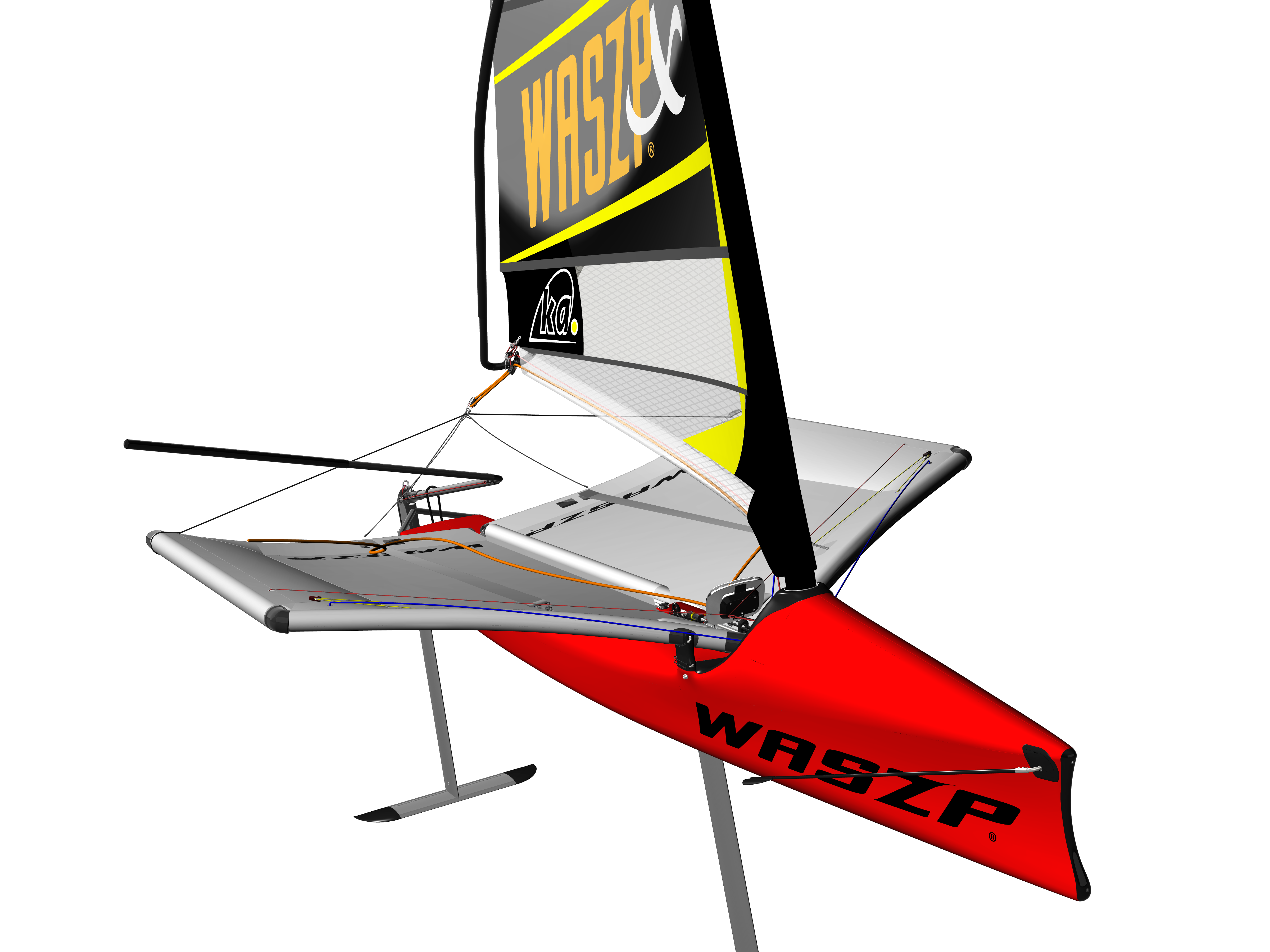
Showroom Pathway SailGP News
Webshop Documents Ask WASZP Privacy Policy
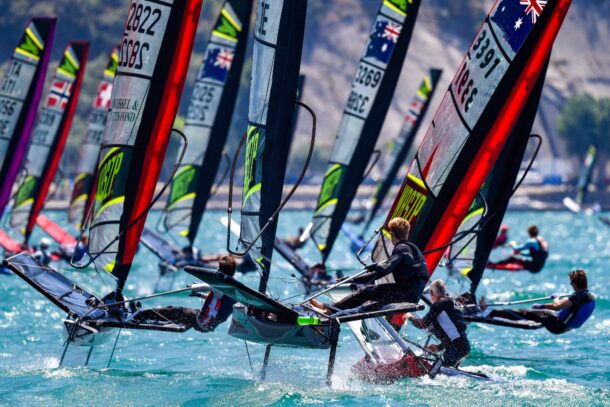
Join the Swarm!
Subscribe to our mailing list and stay up-to-date with the most recent news and updates from WASZP
You have Successfully Subscribed!

IMAGES
VIDEO
COMMENTS
30.2 Josh McKnight. Following his win at Lake Garda, 2012 World Moth Champion, Josh McKnight then set an outstanding top speed and ten second average on his Mach2. It goes to show the Mach2 / KA Sail is a killer combination! 31.5.
The Moth is a small development class of sailing dinghy.Originally a small, fast home-built sailing boat designed to plane, since 2000 it has become an expensive and largely commercially produced boat designed to hydroplane on foils though many are still built at home, typically at much lower cost.. The pre-hydrofoil design Moths are still sailed and raced, but are far slower than their foiled ...
When you purchase a MACH2.6 Moth it includes the following: stunning carbon fibre clear coated hull, high modulus carbon foils (2.4/2.41), hi modulus 40mm mast, hi modulus bent stiff tapered boom, carbon gantry, 2.5 aero wings with no compression bars, KA MSH5.4 deck sweeper sail, all rigging ropes and fittings, trolley, foil covers, boat cover,
Gael Pawson sailing a foiling Moth at Alan Hillman's Moth sailing school in Mar Menor, Spain 3. International Moth Always one of the more radical development dinghy classes, the adoption of a foiling design (as opposed to the 'low-riders' - non-foiling Moths) completely transformed this class and gave it a huge boost in international popularity.
But a new design of Moth might change all that as the long-awaited WASZP goes on sale. Conceived five years ago by Andrew McDougall, designer of the MACH2 Moth, the idea was to make a foiling Moth ...
Moth boats use a hydrofoil to skim through the water off the surface. ( ABC News: Tom Wildie ) It also set in motion innovations which made their way to the biggest race in global yachting.
Max vang should be achieved in 15 knots and max cunningham in 18 knots. The Moth gets overpowered quickly, and from 18 knots upwards a softer tip or different sail is required. North's LA and DS designs have a slight variation in the luff rounds to cover the range, with the DS being aimed at 14 knots true wind speed.
Current National and four-time European Champion Chris Rashley tells us why you should try Moth sailing.From foil tacking to control systems, Chris gives som...
Swift Hydrofoils. Damic Design specialises in design and manufacturing of Moths and Hydrofoils for the International Moth Class. While Moth sailing is our passion, our main objective is to offer the fastest, most developed and best built boats and foils on the market. Our involvement in the class started in 2004, exposing us to the world of ...
Andy Horton demonstrates sailing a hydrofoil sailboat - one with wing-like foils mounted underneath. As the boat speed increases, its hull is lifted out of t...
About the Boat. The international Moth Class is the fastest one Person Dinghy in the World. Key Facts: Maximum Length: 3.355 m; Maximum Beam: 2.250 m; Total Weight: Unrestricted (~ 35-40 Kg) Maximum Sail Area: 8.25 m² ; Optimum Skipper Weight: 60-80 Kg. IMCA - Committee
Horizontal hydrofoils lift the Bladerider Moth Sailboat out of the water in even the lightest breeze. By Alan Block Updated: August 21, 2007 GUMoth368 Virginia Veal/ Www.bladerider.com. Even the ...
The International Moth is a high-speed, development sailing class with 90 years of continuous innovation. The modern day carbon fibre boats reach speeds of over 30 knots on hydrofoils. With the available training newcomers are becoming competitive in a short period.
A sailing hydrofoil, hydrofoil sailboat, or hydrosail is a sailboat with wing-like foils mounted under the hull. ... which was the first time a hydrofoil Moth had won a race at a World Championship. This hydrofoil configuration was later declared illegal by the class, as it was felt to constitute a multihull, which is prohibited by class rules. ...
Dalton Bergan sails out of an Olympic Mountains sunset aboard his moth boat, which whizzes across the water on hydrofoils. Sailing hydrofoil moths is trickier than a regular sailboat; it has the ...
As a cool boat it stands on its own, and for what it has since inspired. The International Moth has done more than any class to raise the profile of sailing hydrofoils. Photo: Thierry Martinez/Sea&Co
Hydrofoil technology has found its way into various sailing classes, revolutionizing the way we sail. Let's take a closer look at some of the notable hydrofoil classes: International Moth: The International Moth class is one of the most widespread uses of hydrofoils in sailboats. These single-handed dinghies feature foiling capabilities ...
The International Moth class has experienced a resurgence of interest and publicity associated with the adoption of hydrofoils and the performance improvements these foil have brought. This paper documents a series of full scale tow tests intended to characterize some of the major parameters impacting the performance of a foiling Moth.
Bieker Moth When speed matters. When a group of top navel engineers, designers and builders come together with very few design restrictions, the meaning of fast is redefined. ... More area has more drag, but it also lifts the boat sooner in lighter winds. Section shape varies the amount of lift and drag. For heavier air foils the emphasis is ...
Explore the evolution of high-speed hydrofoils in Moth Class Sailing, a thrilling journey into advanced marine technology. Discover the thrilling evolution of Moth class sailing and its high-speed hydrofoils, revolutionizing the world of sailing.
Wet out a piece of 200g plain weave on the board, wet the top of the deck foam and lay foam board on top on top of the plain weave. Wet the bottom of the foam and lay 200g biax on that. Lay Peel Ply on top of all the exposed carbon and then vacuum bag it. Test fit the deck again to make sure it is still a good fit.
WASZP CLASS SAILS INTO NEW HEIGHTS WITH RECORD PARTICIPATION AND GLOBAL EXPANSION February 6, 2024. The WASZP Class, renowned as the premier one-design foiling dinghy globally, is making waves with unprecedented growth and record-breaking...
Moth items only. Only second-hand Moth specific items may be listed/requested. Please do not list non-Moth related items (even general sailing gear). 3. Second-hand only. Please do not advertise new items/services as a business. 4. Buy & sell only. For any other info about Moths, please refer to "International Moth Sailing", "International Moth ...